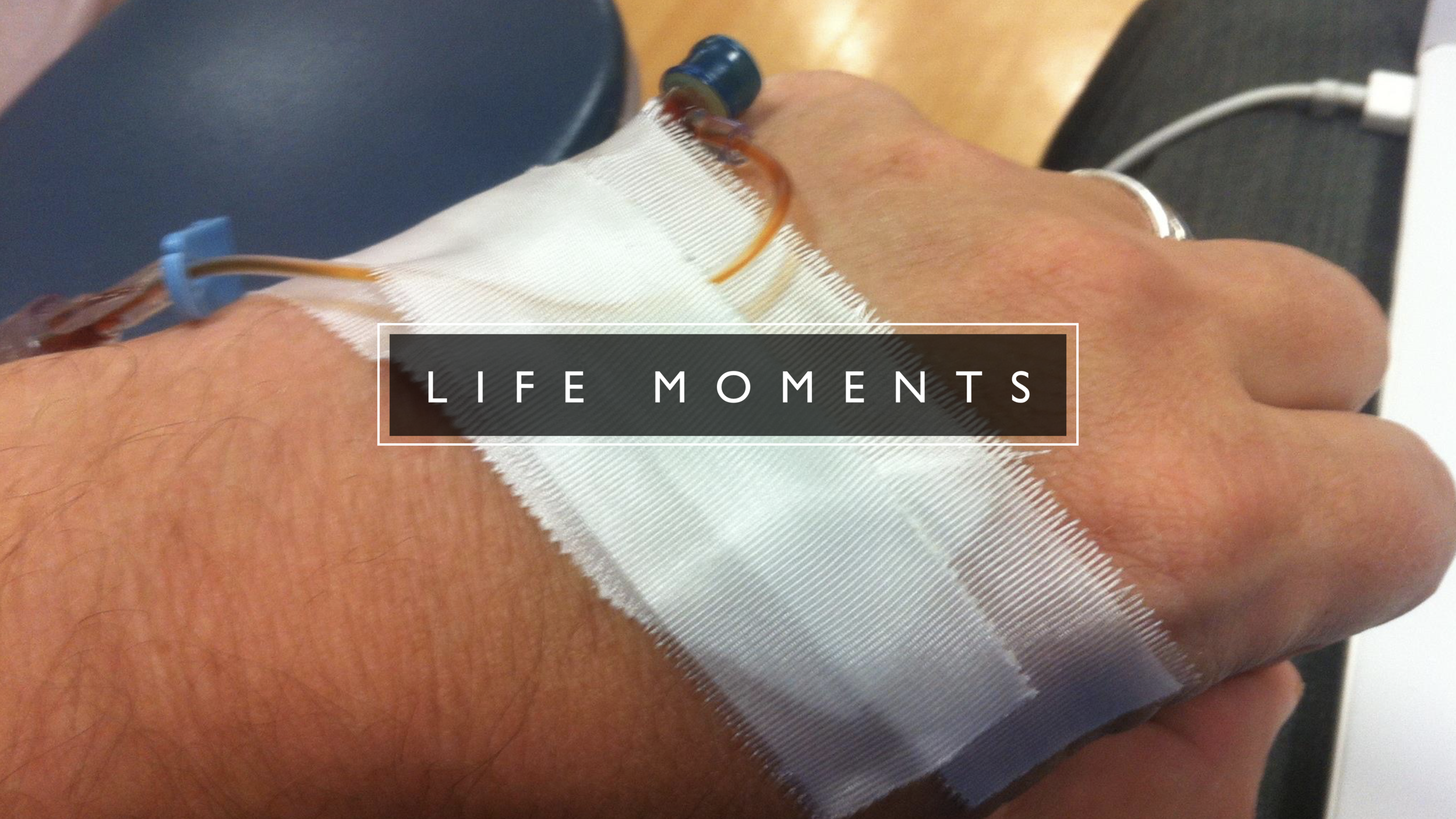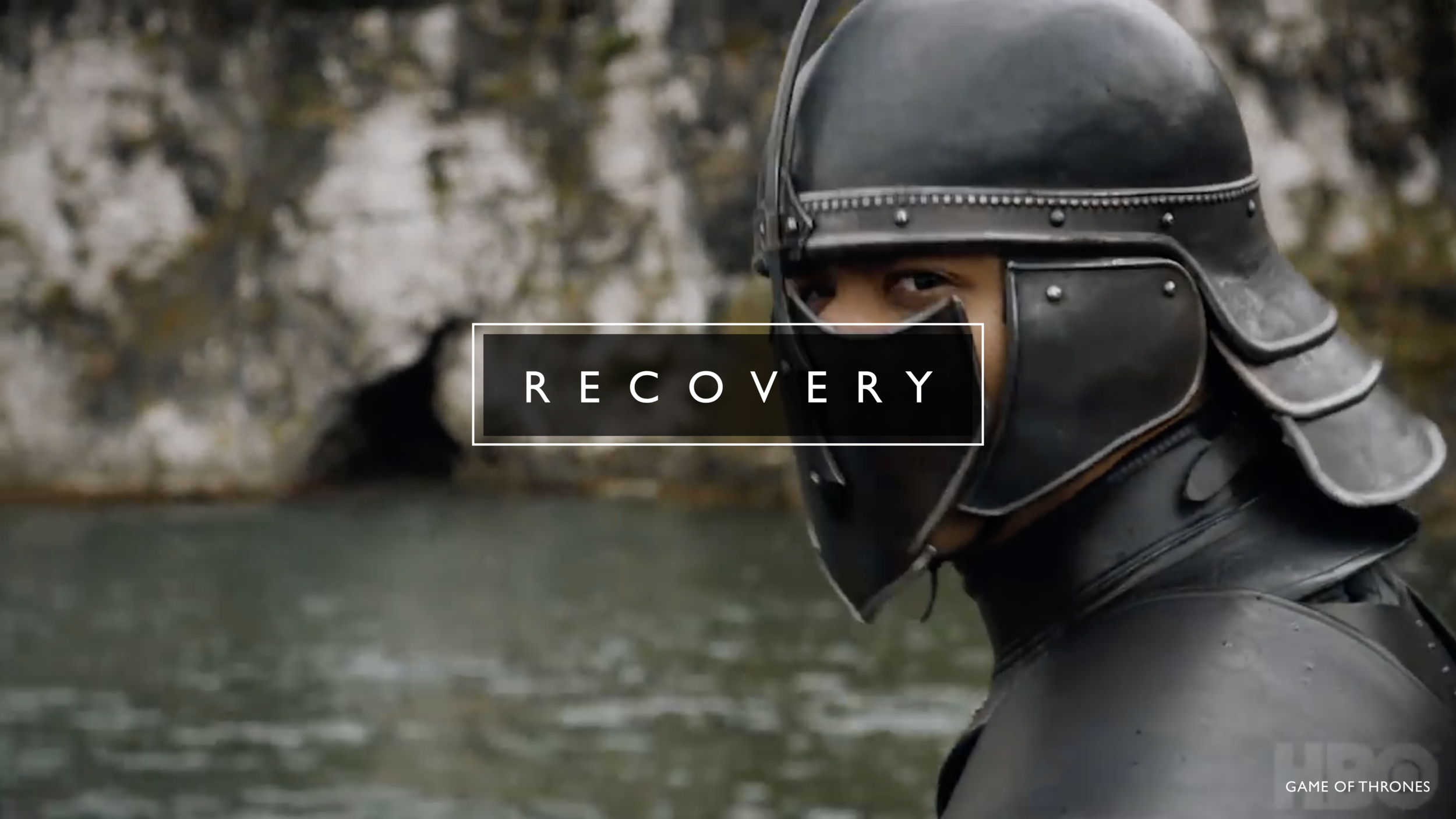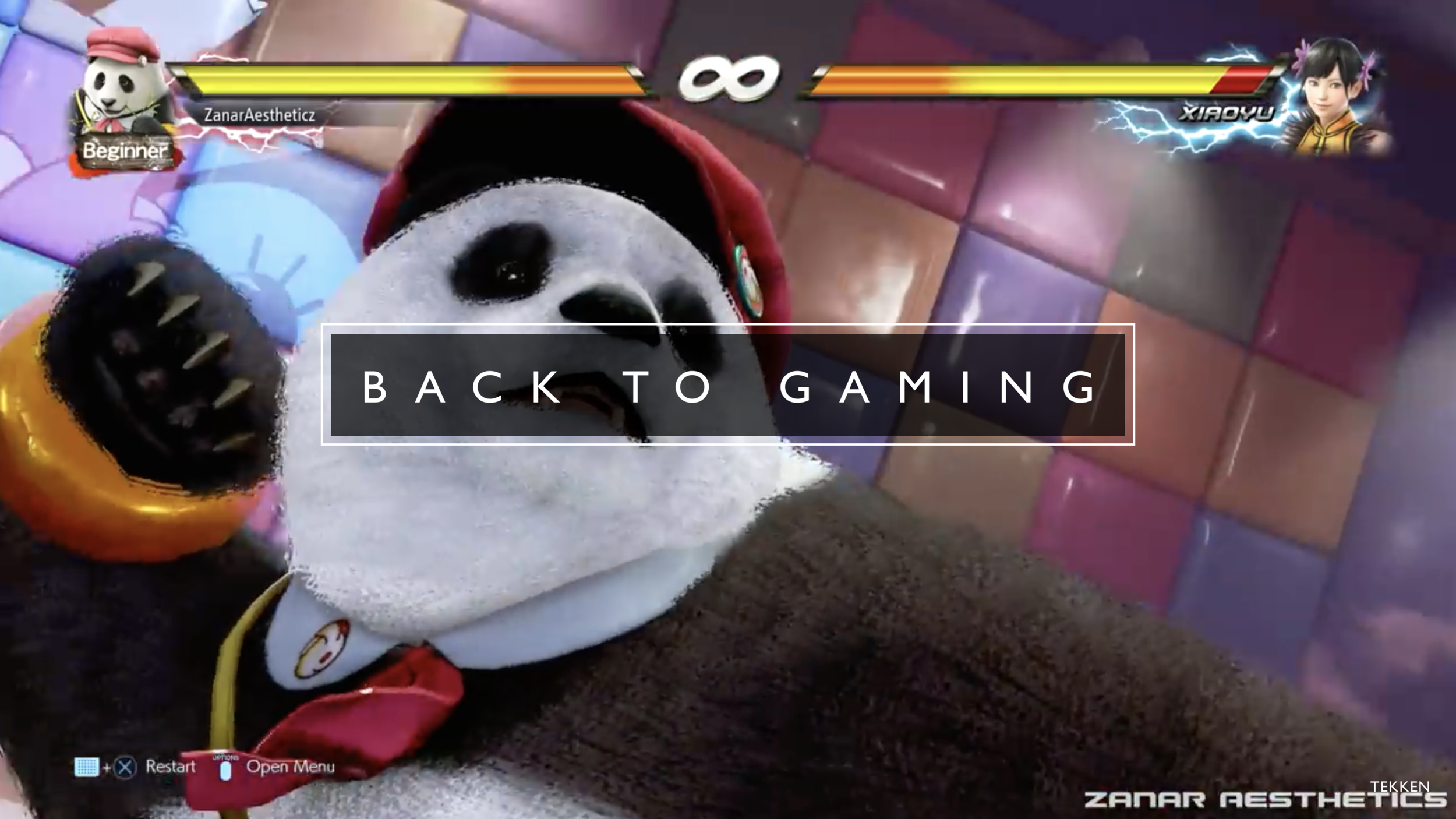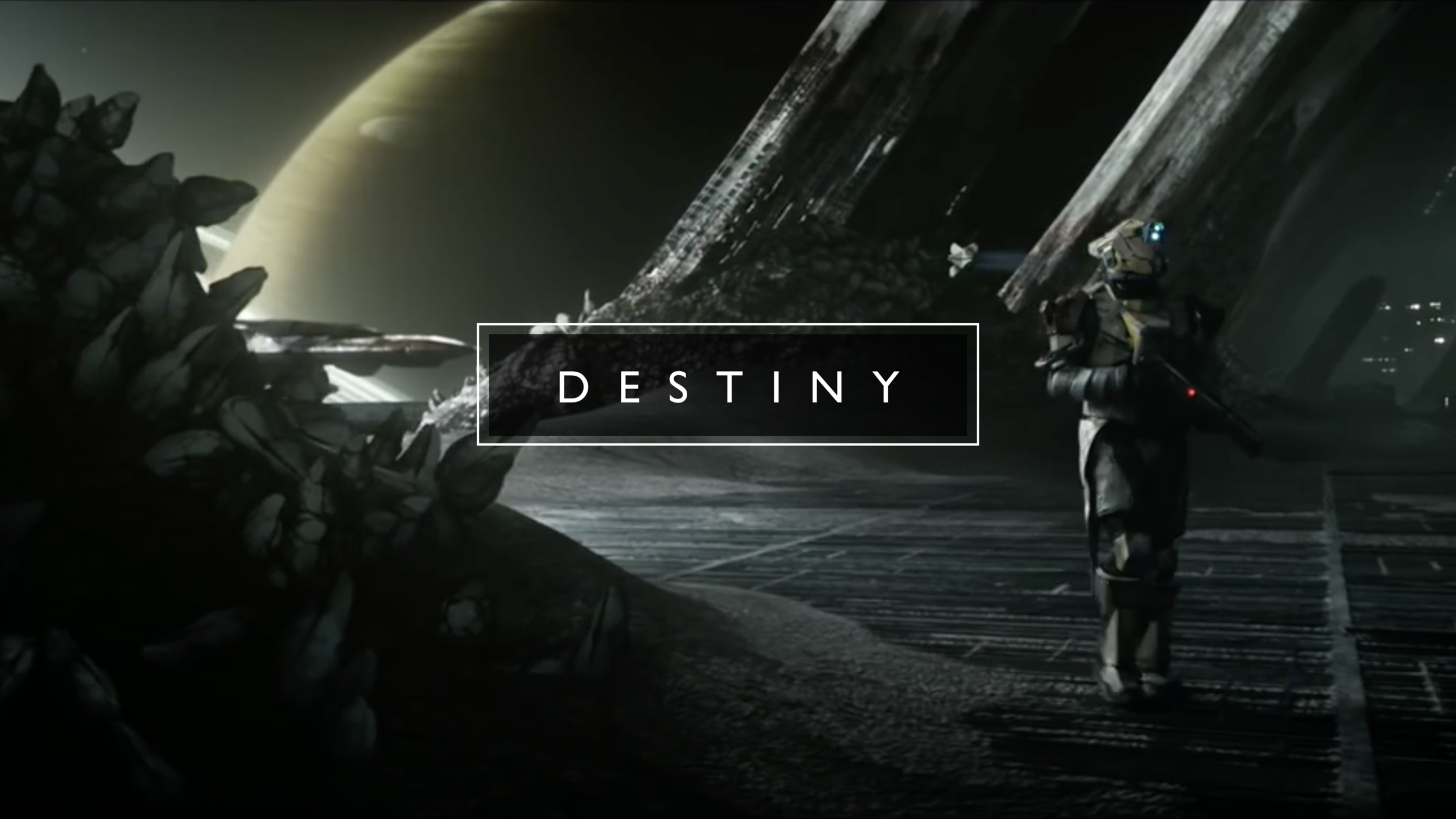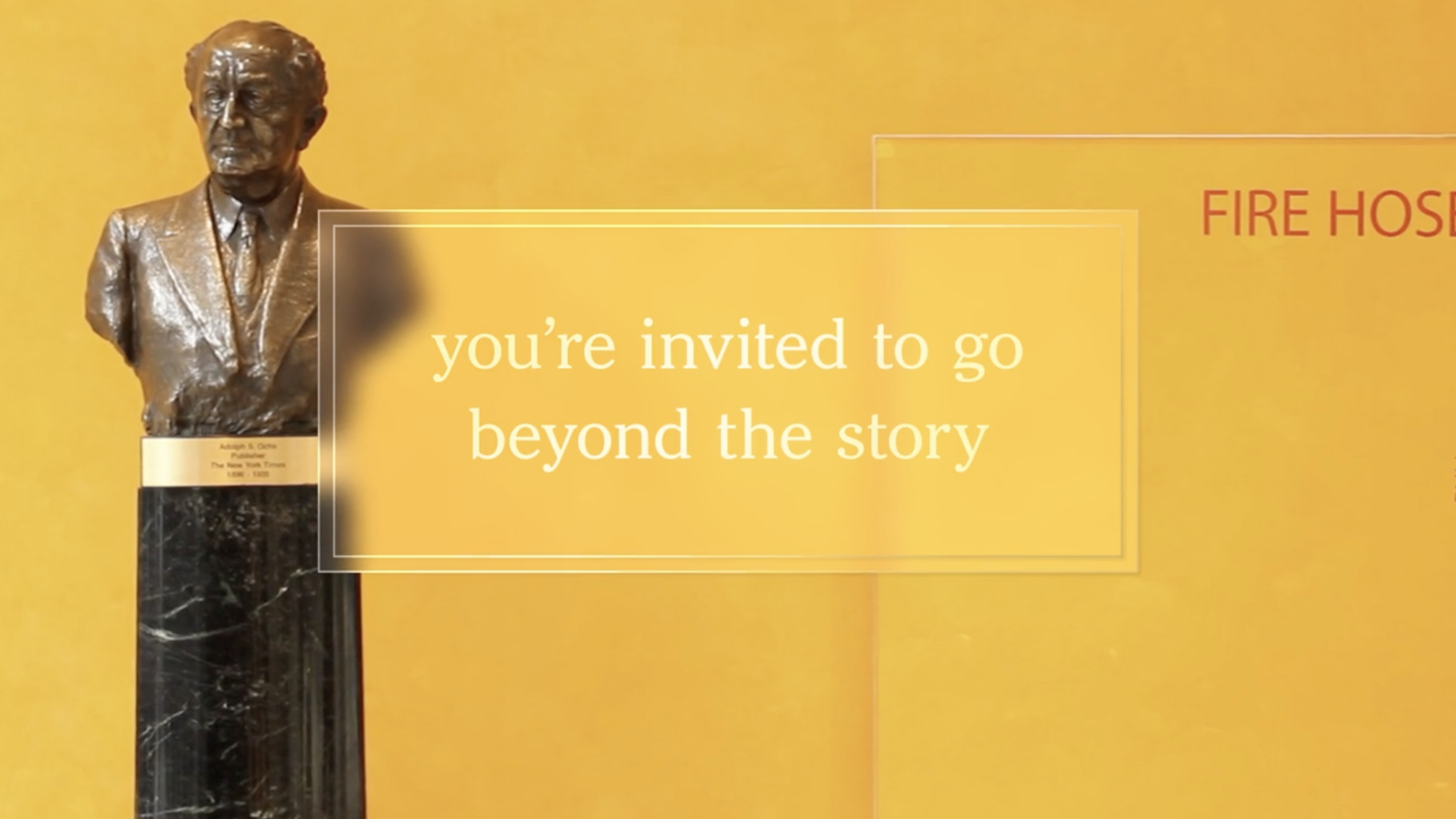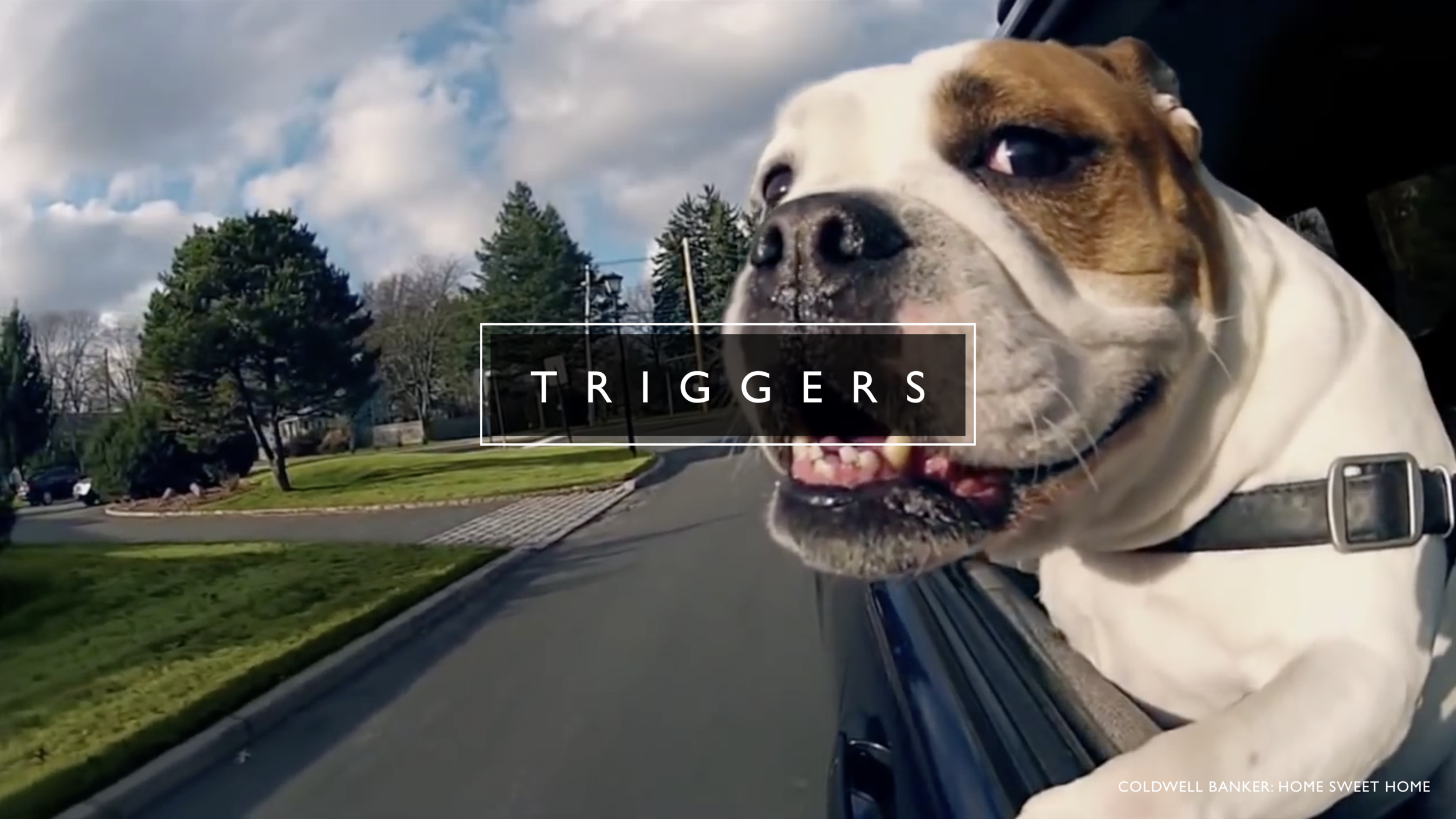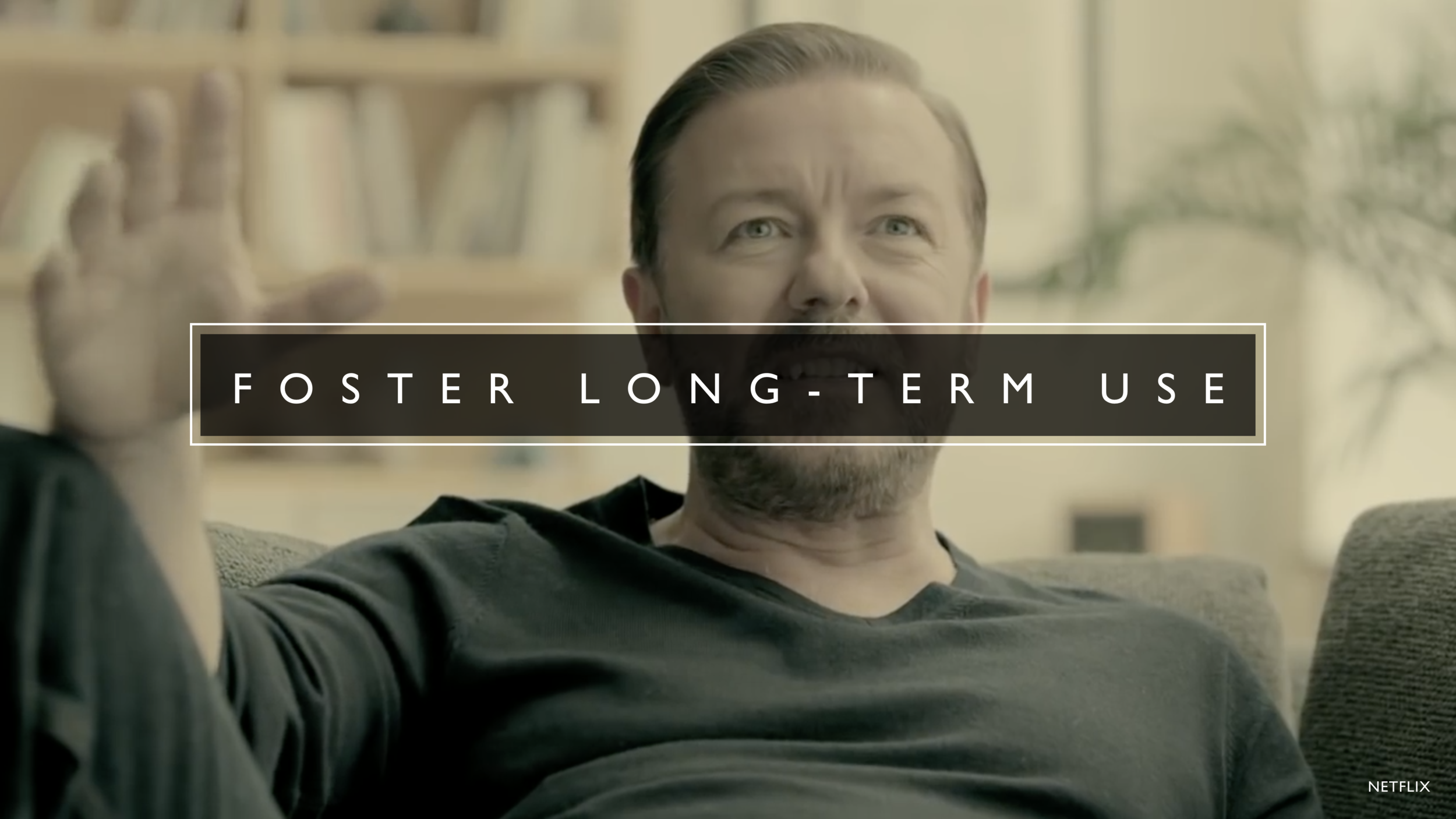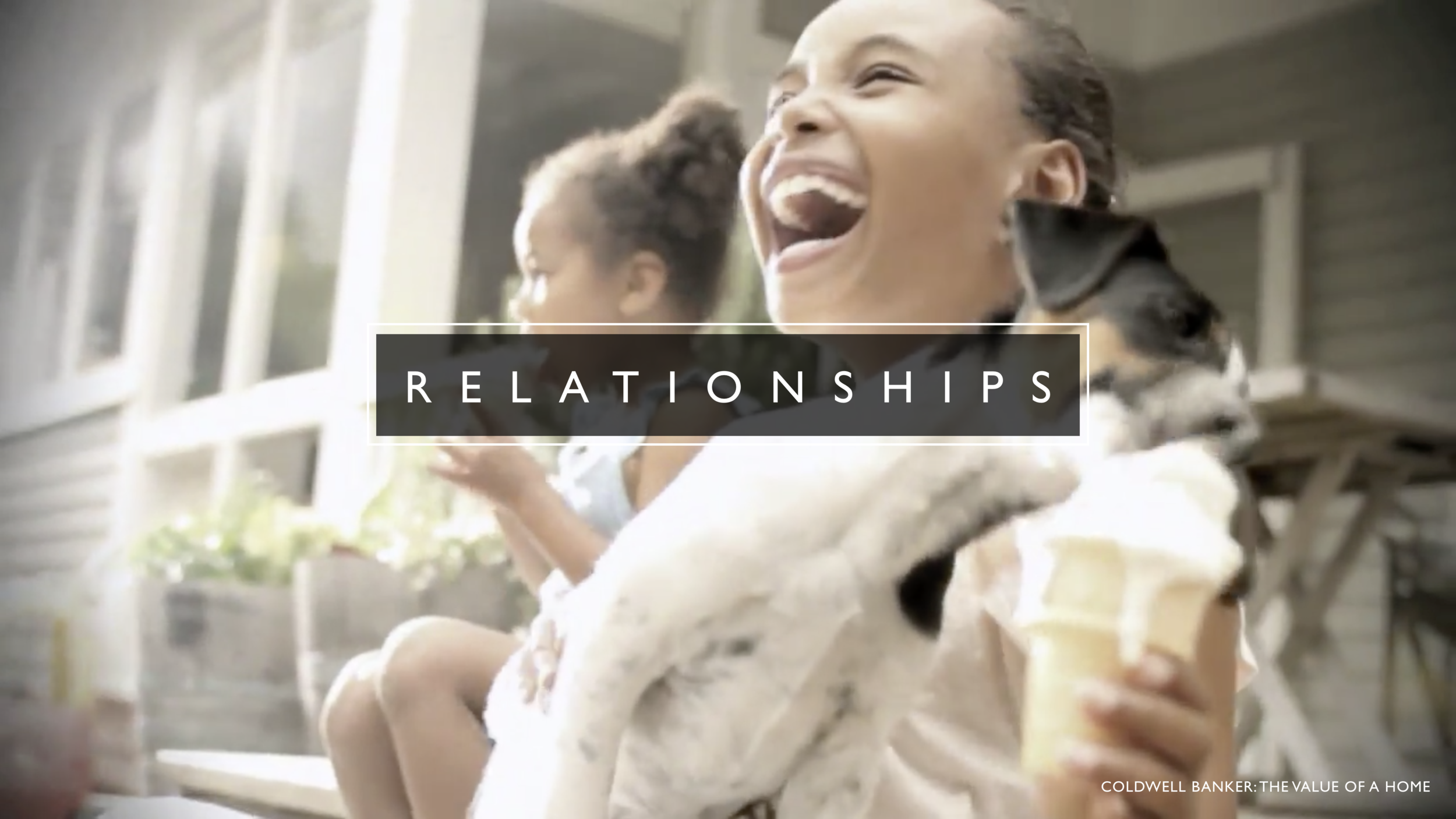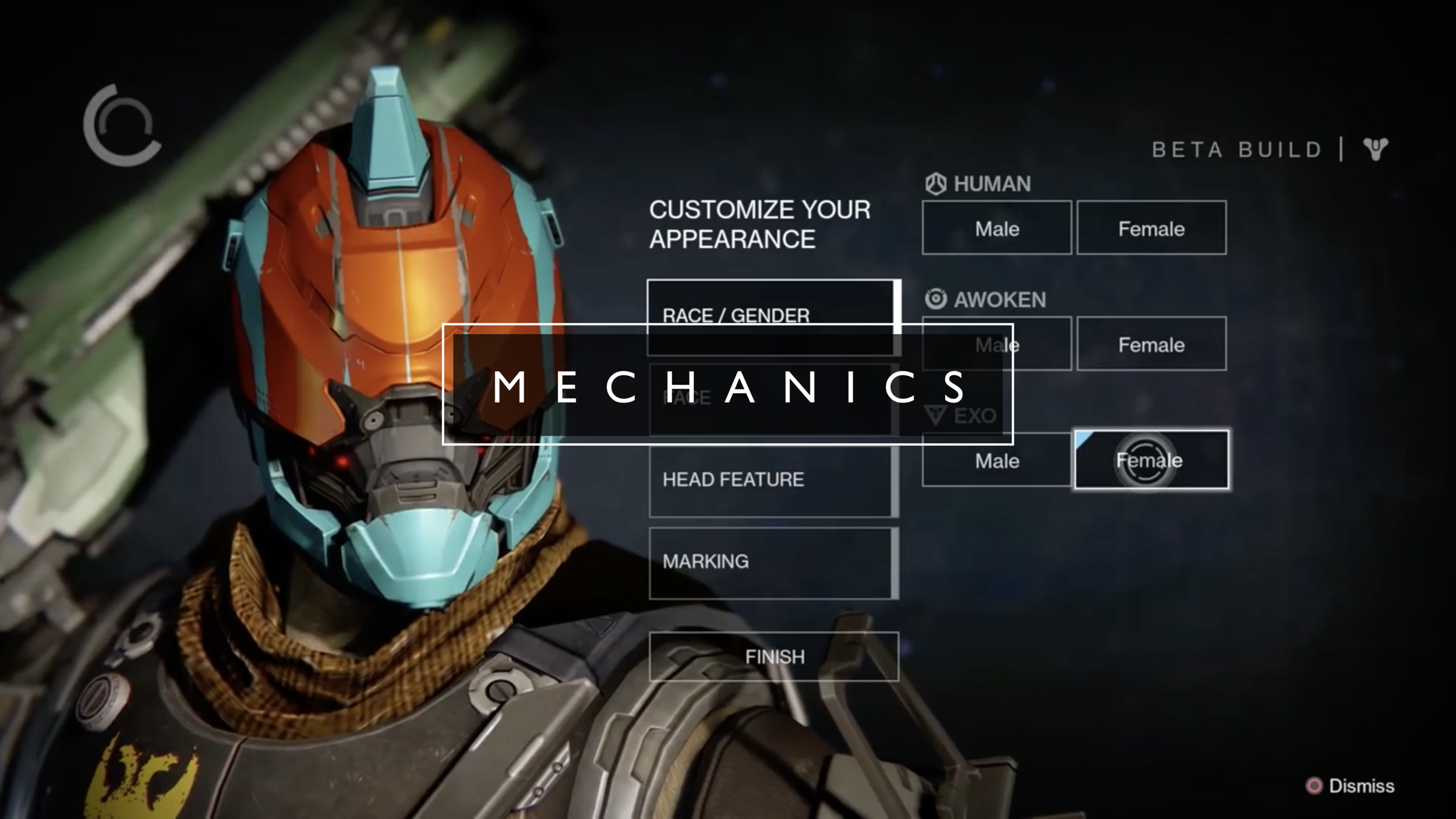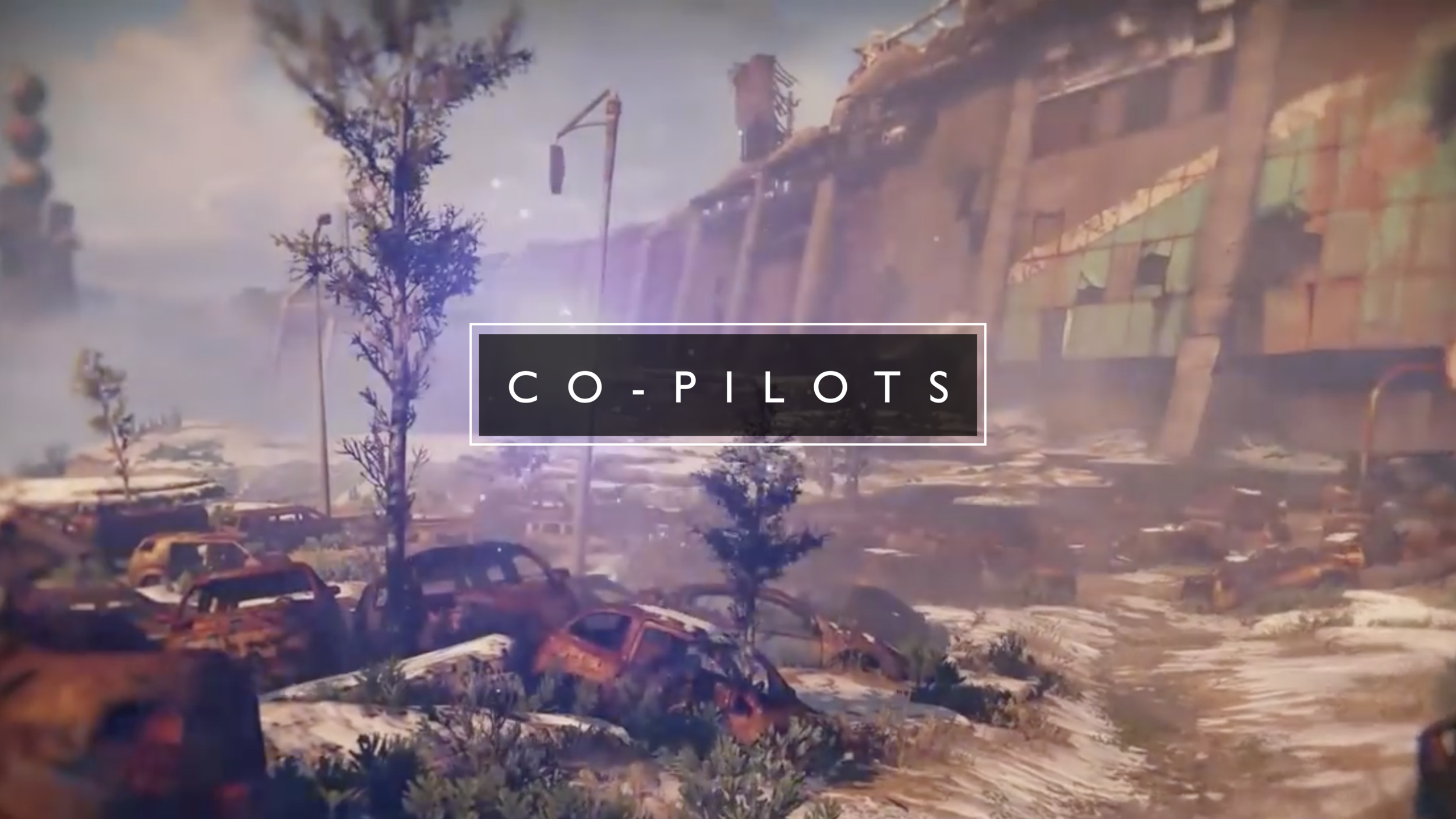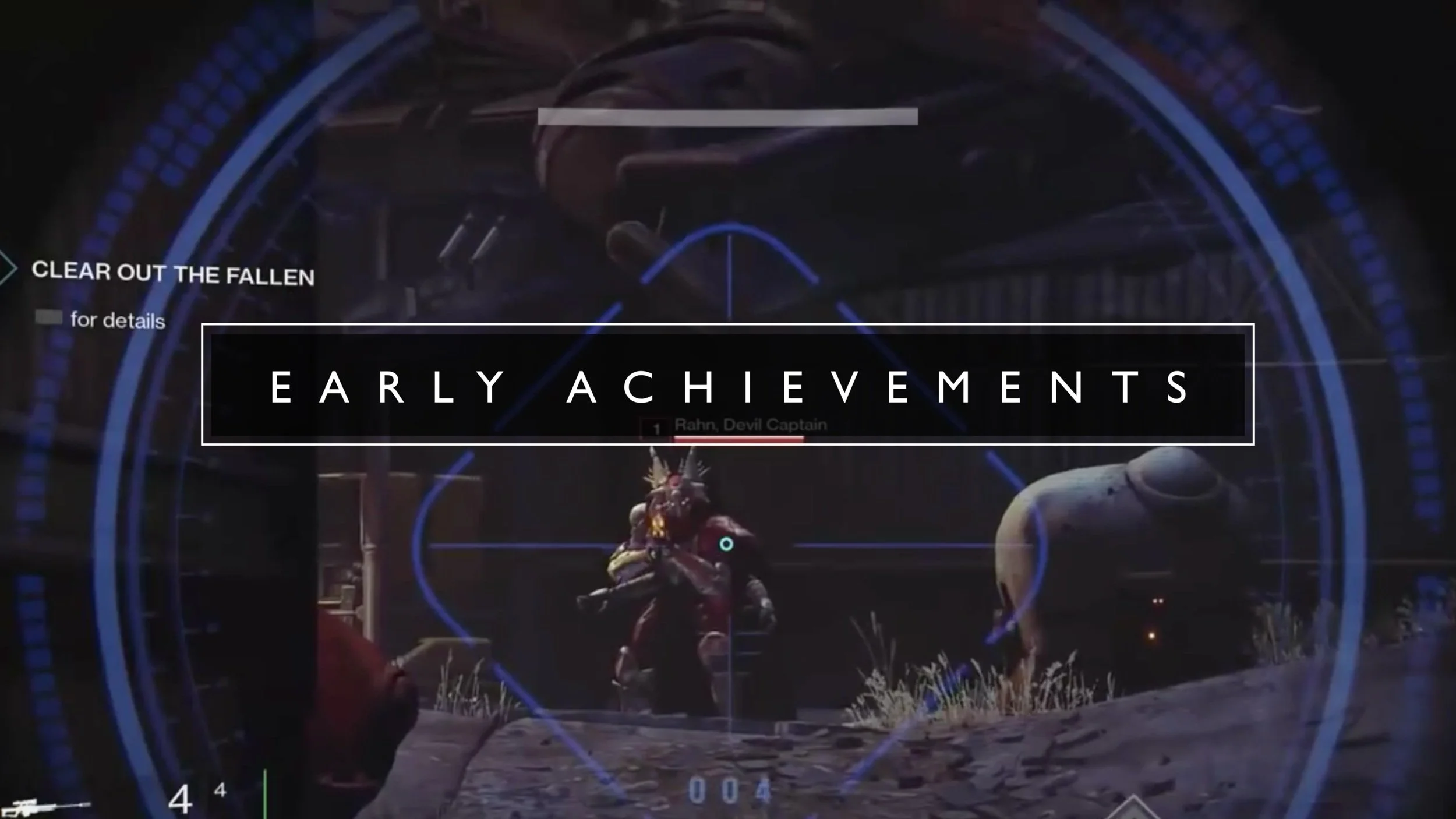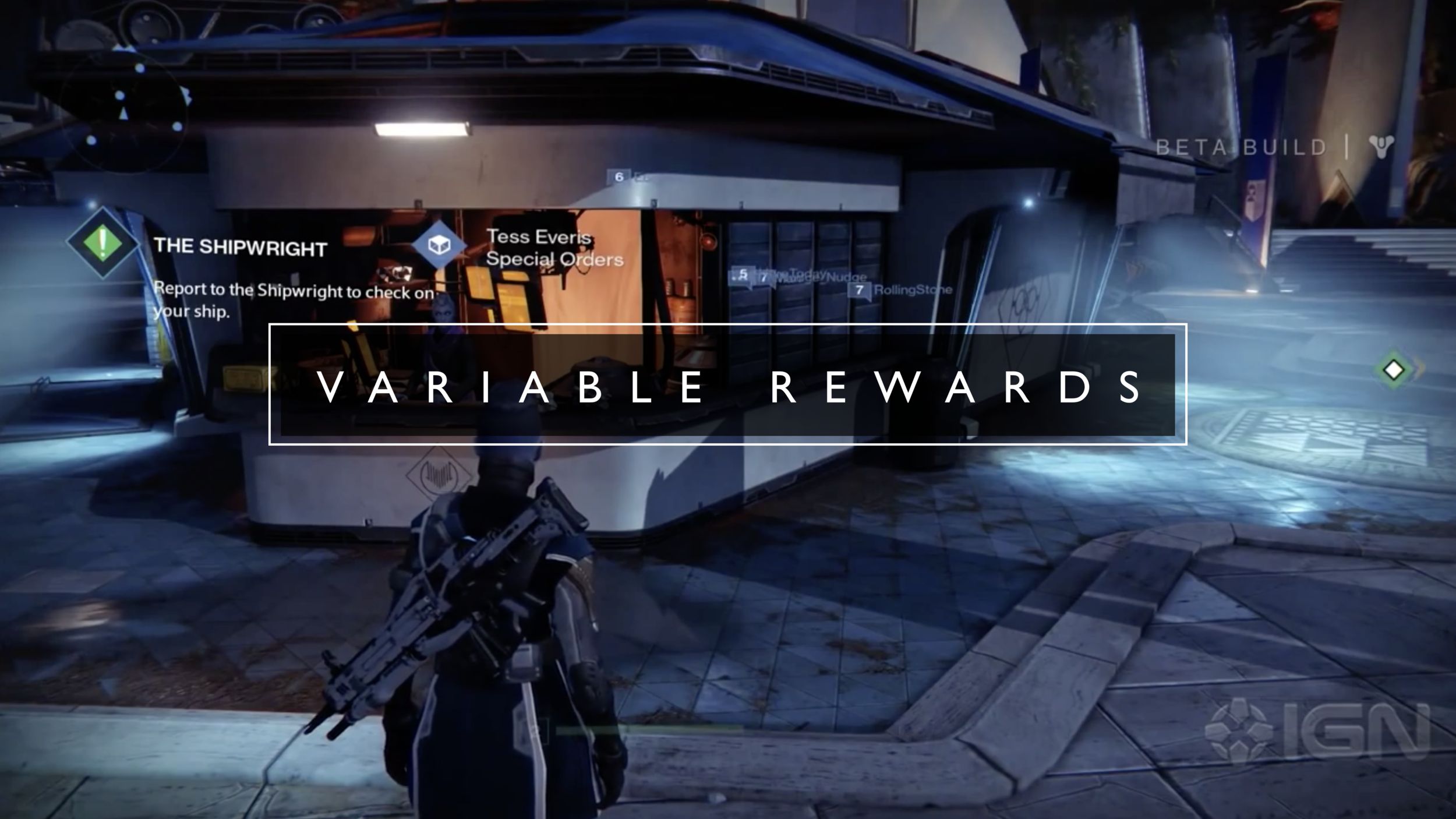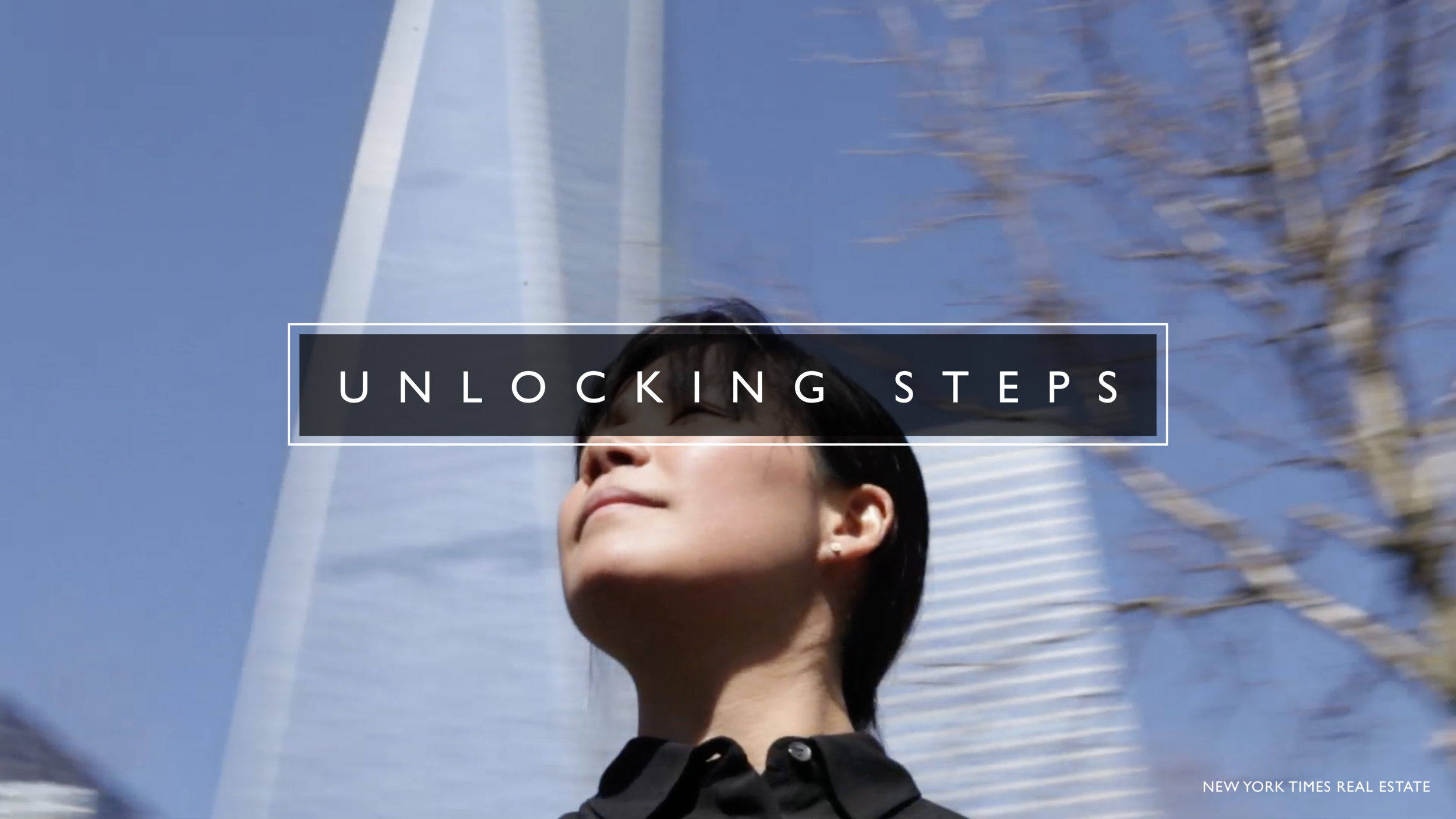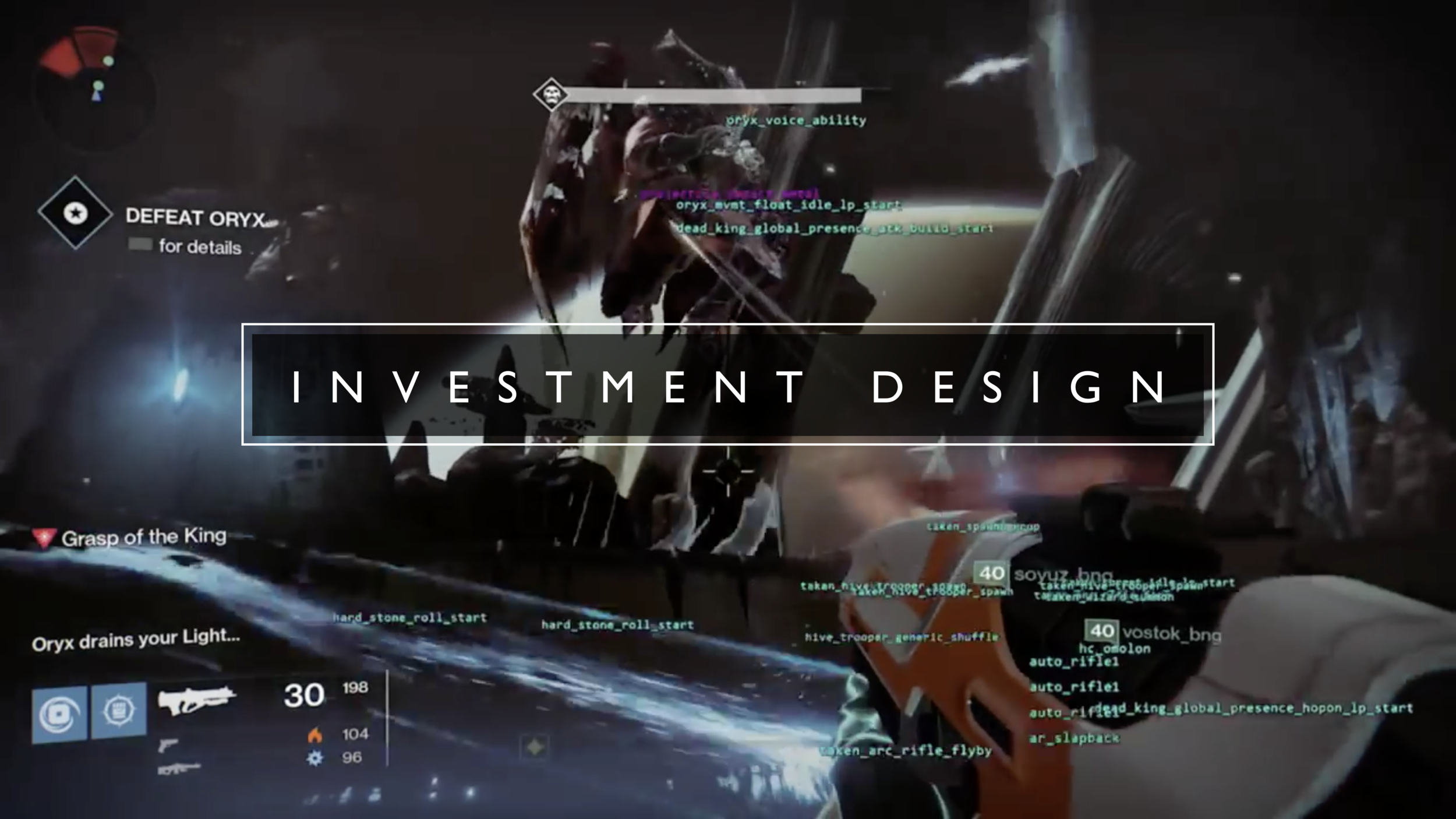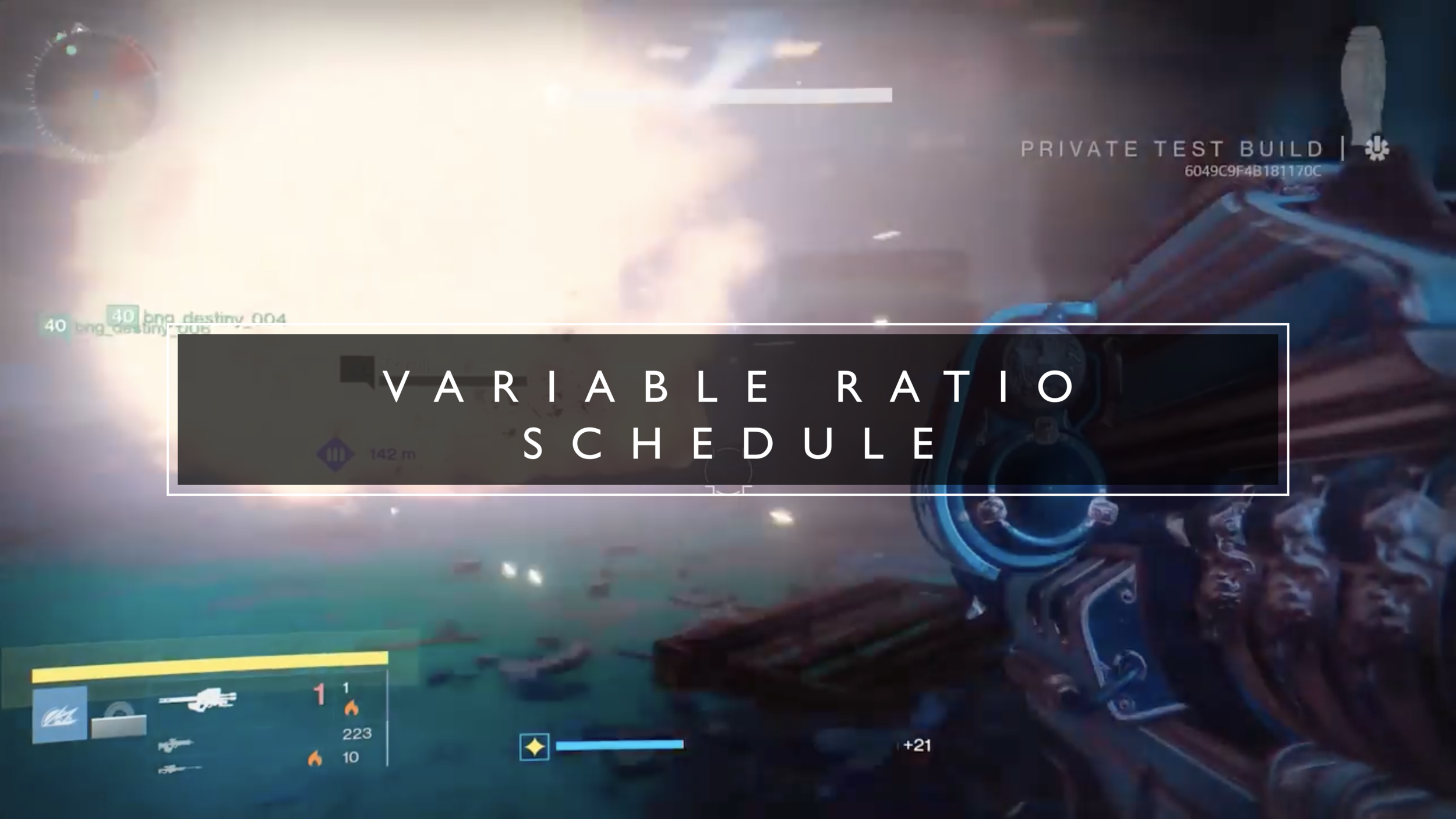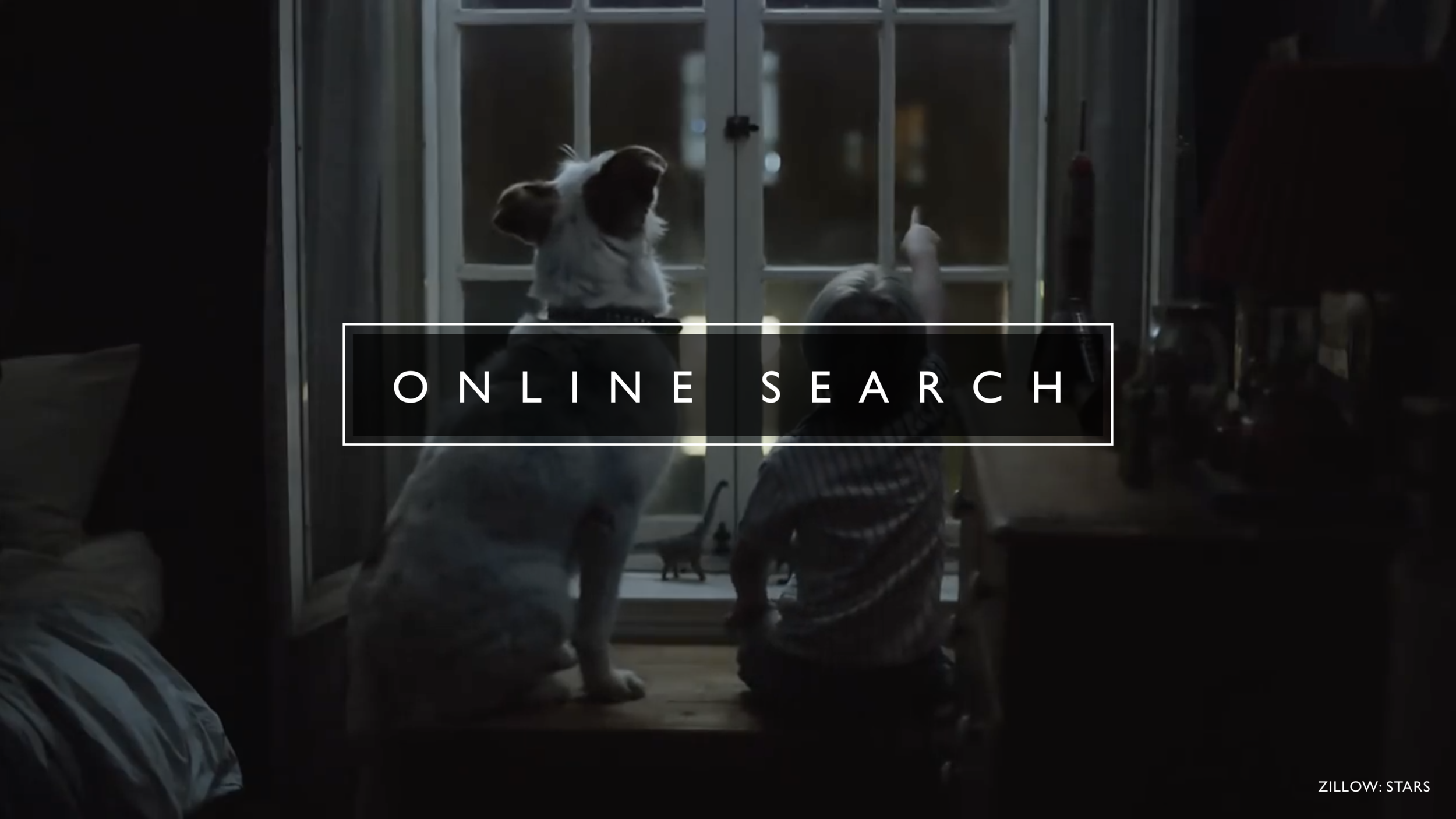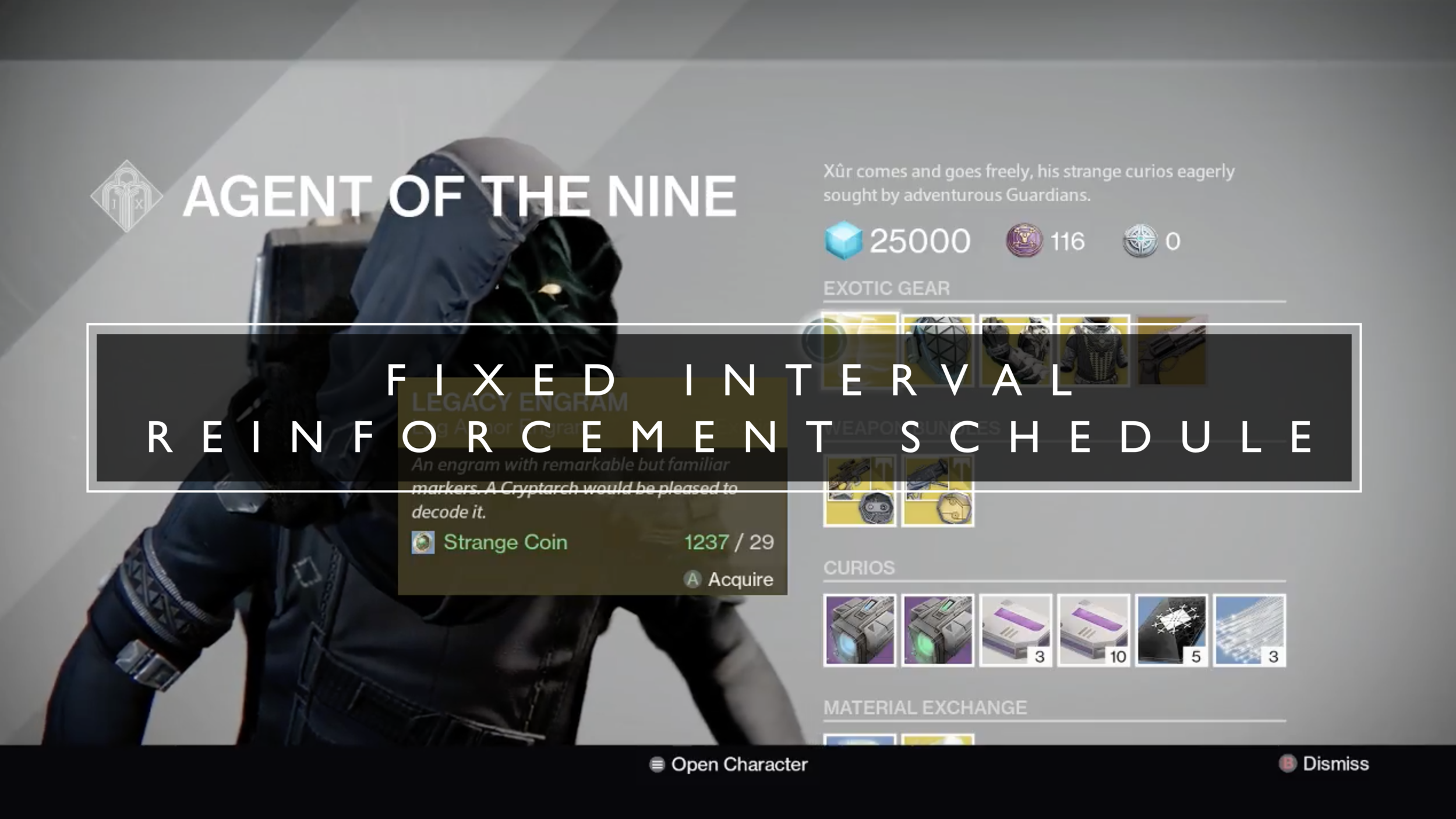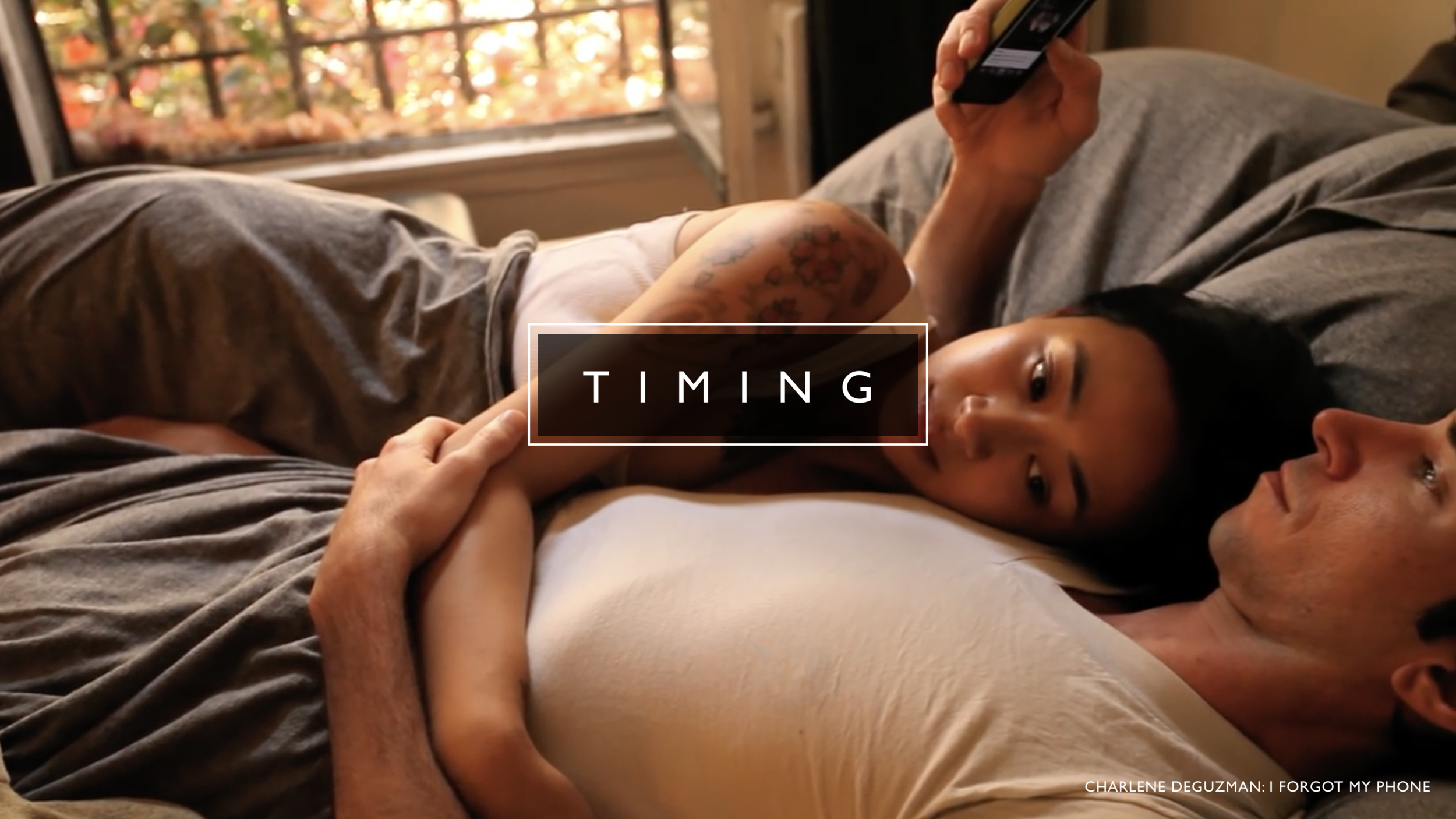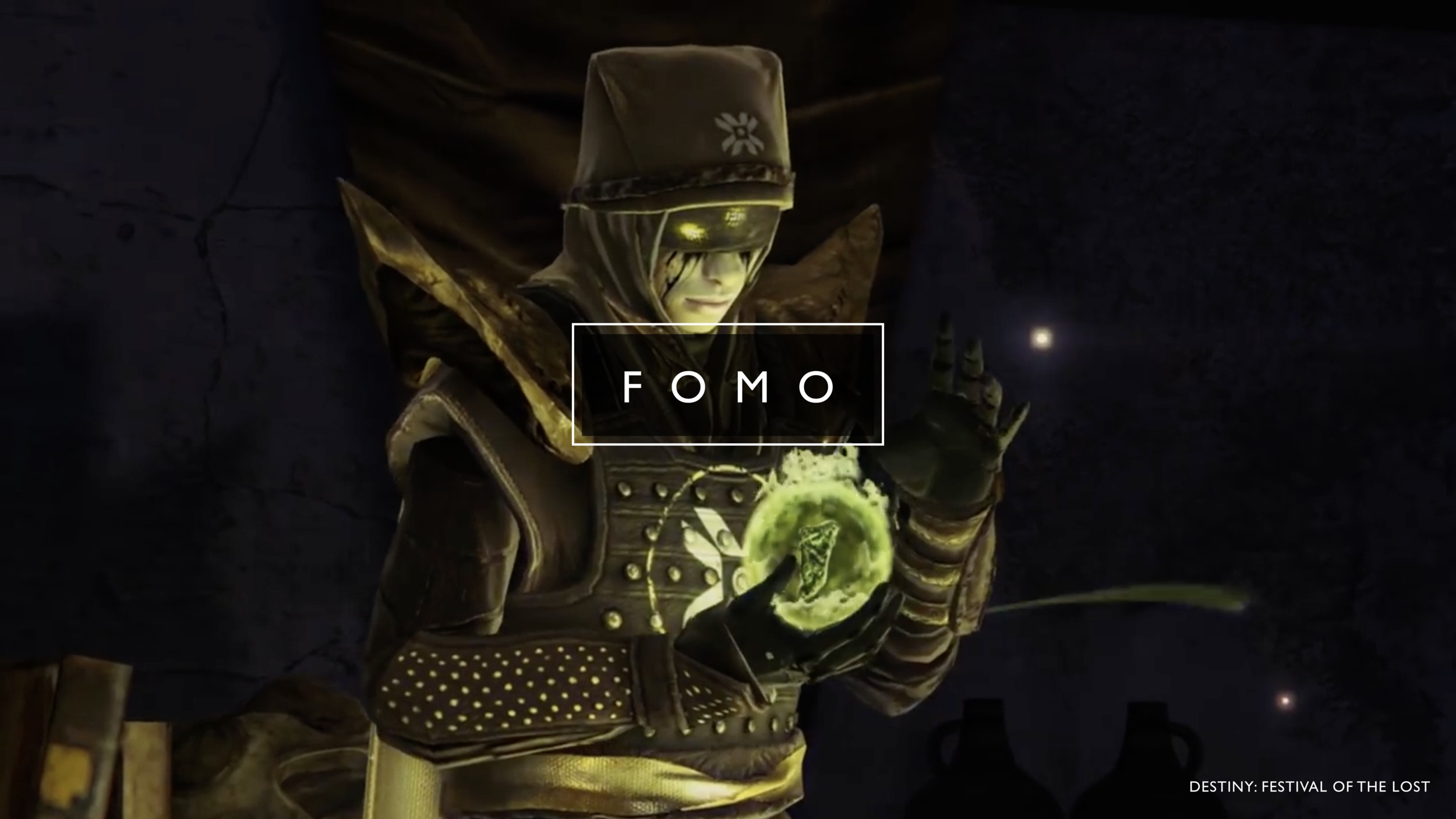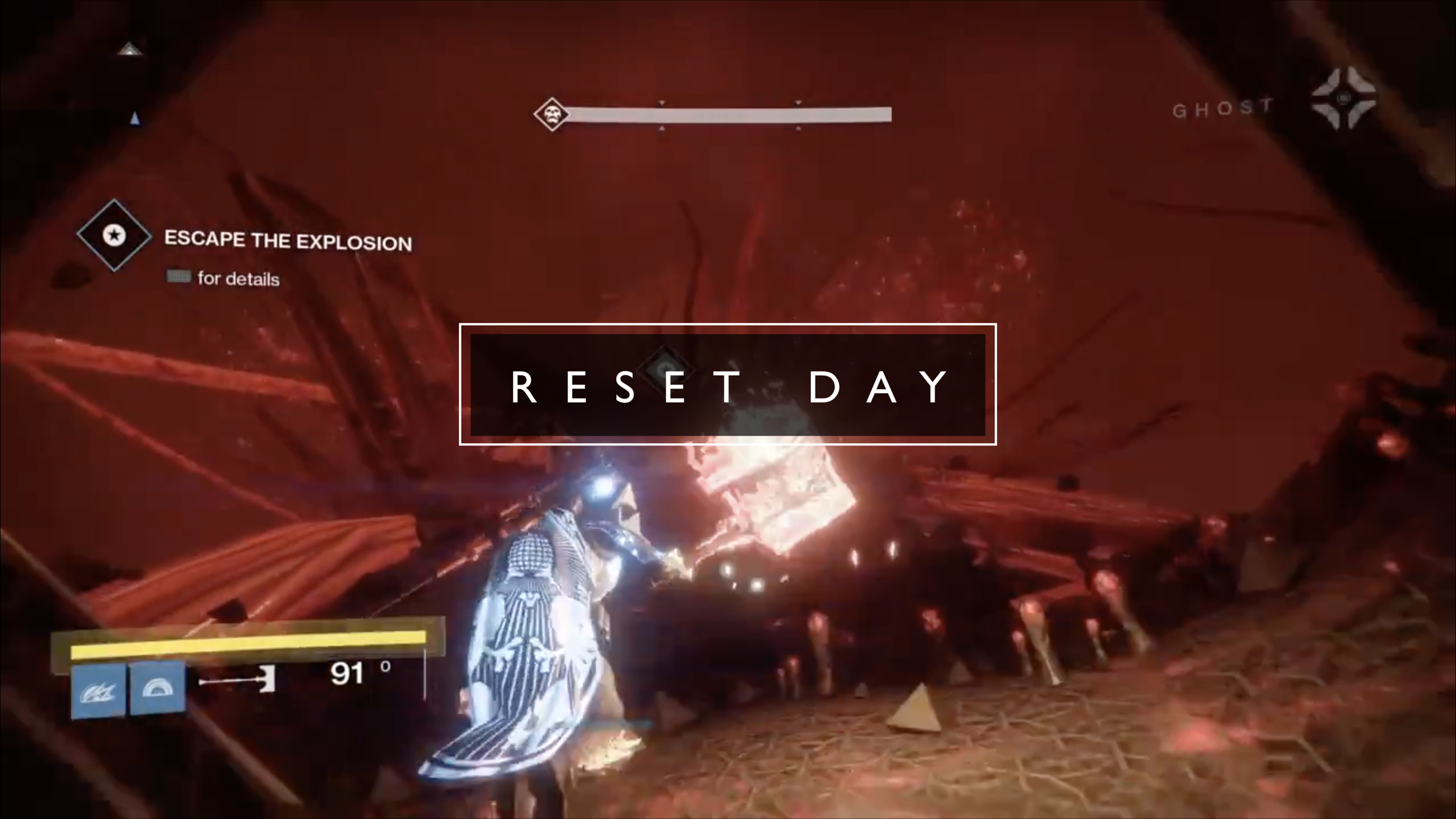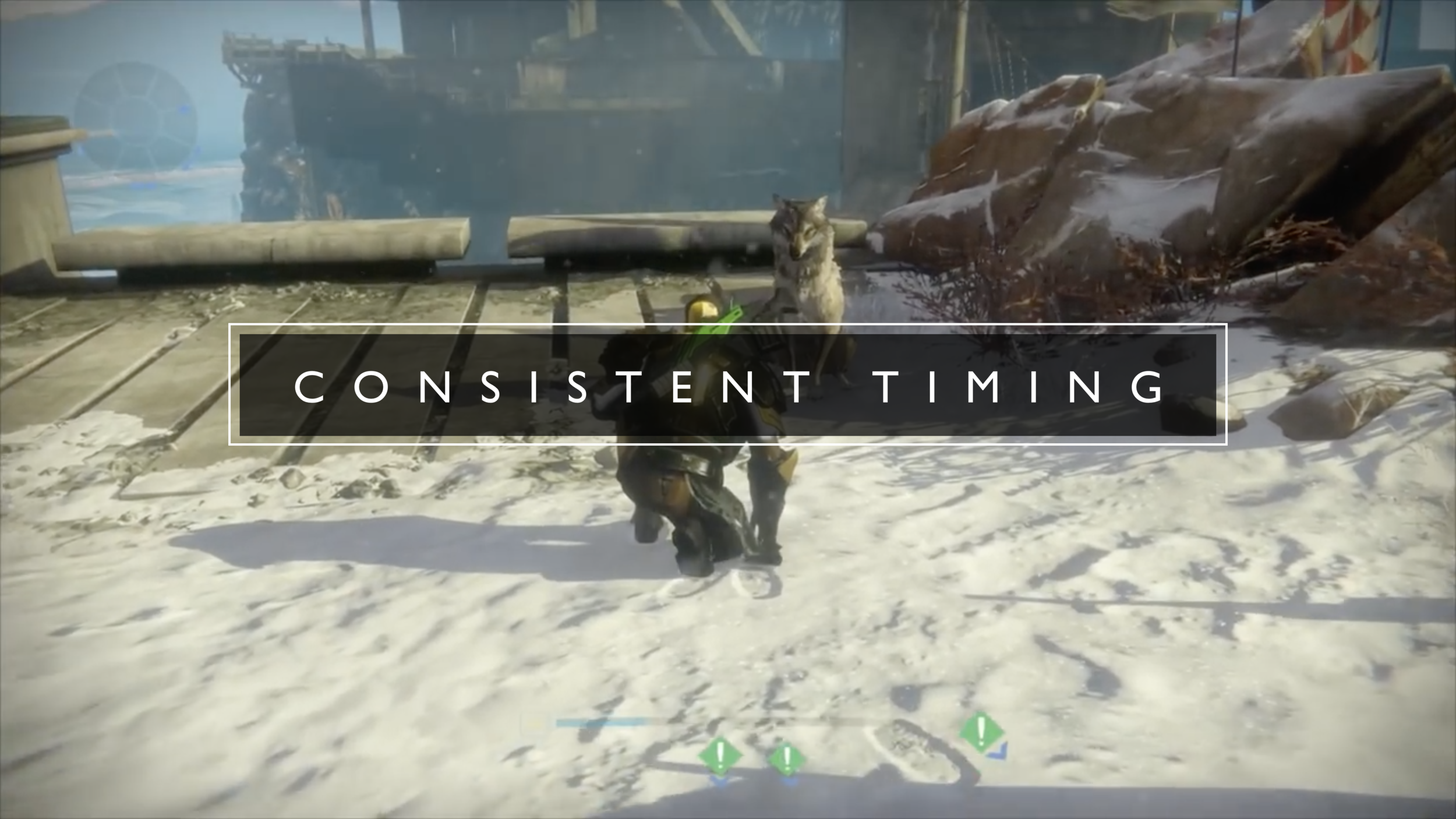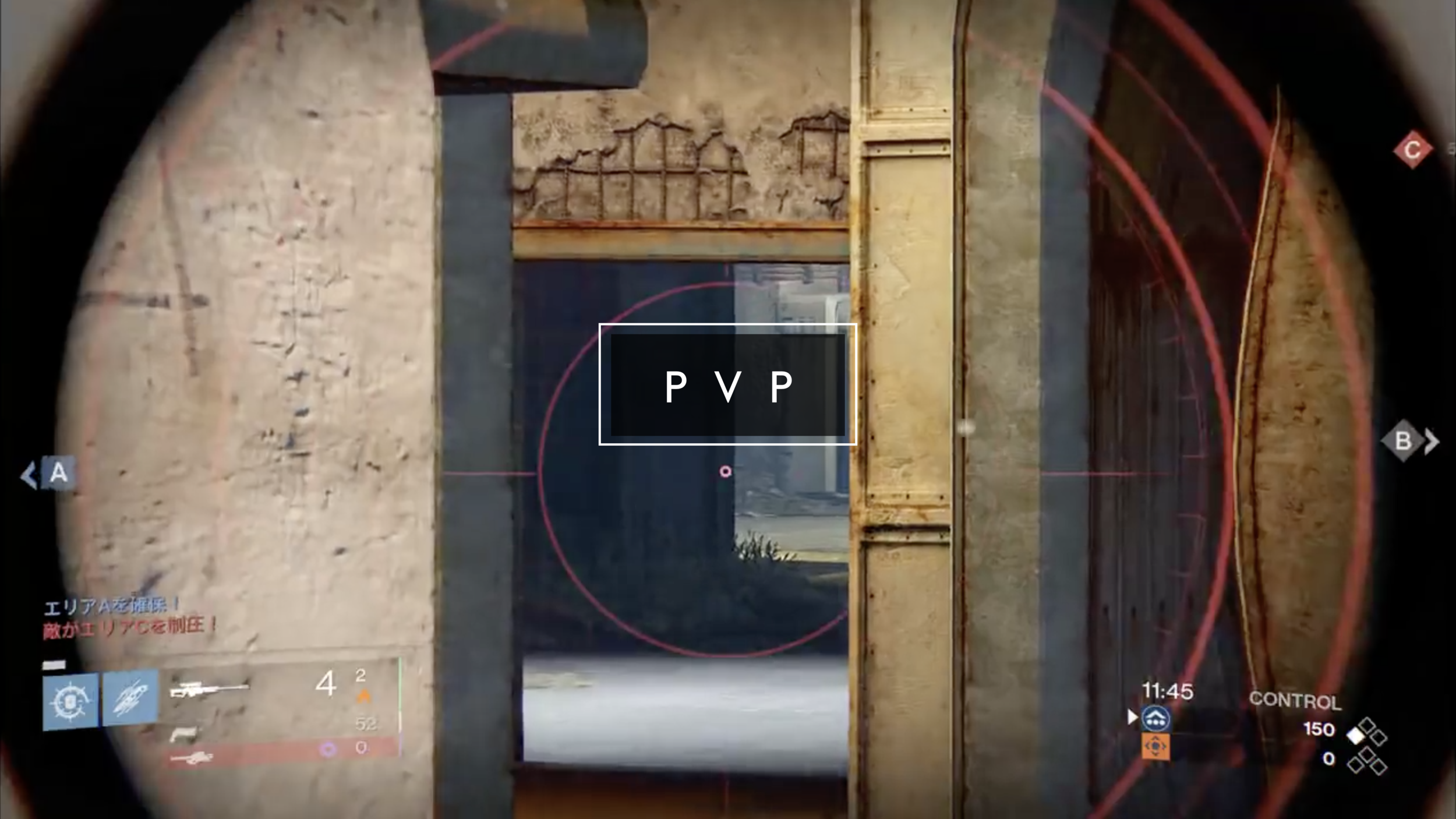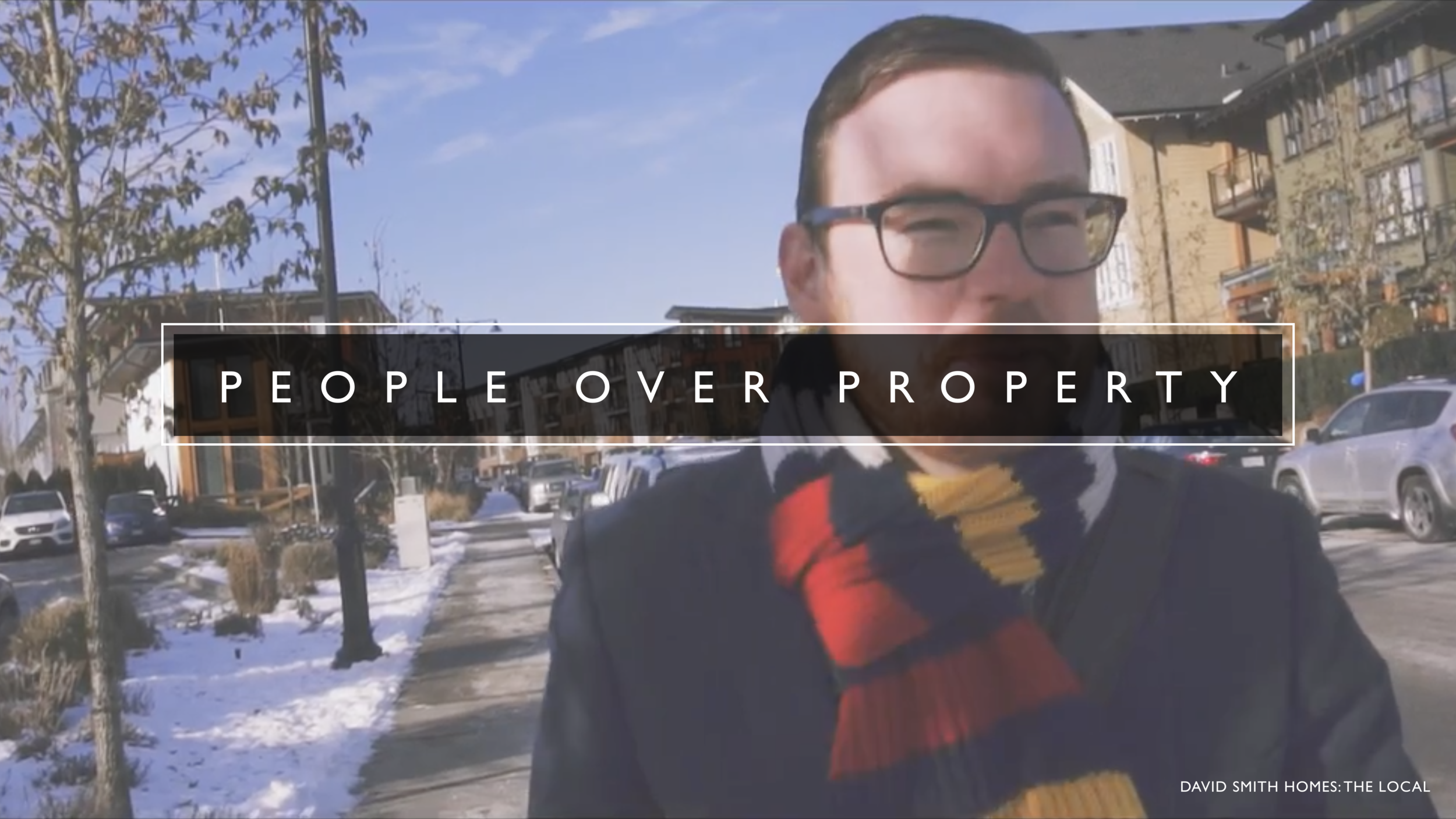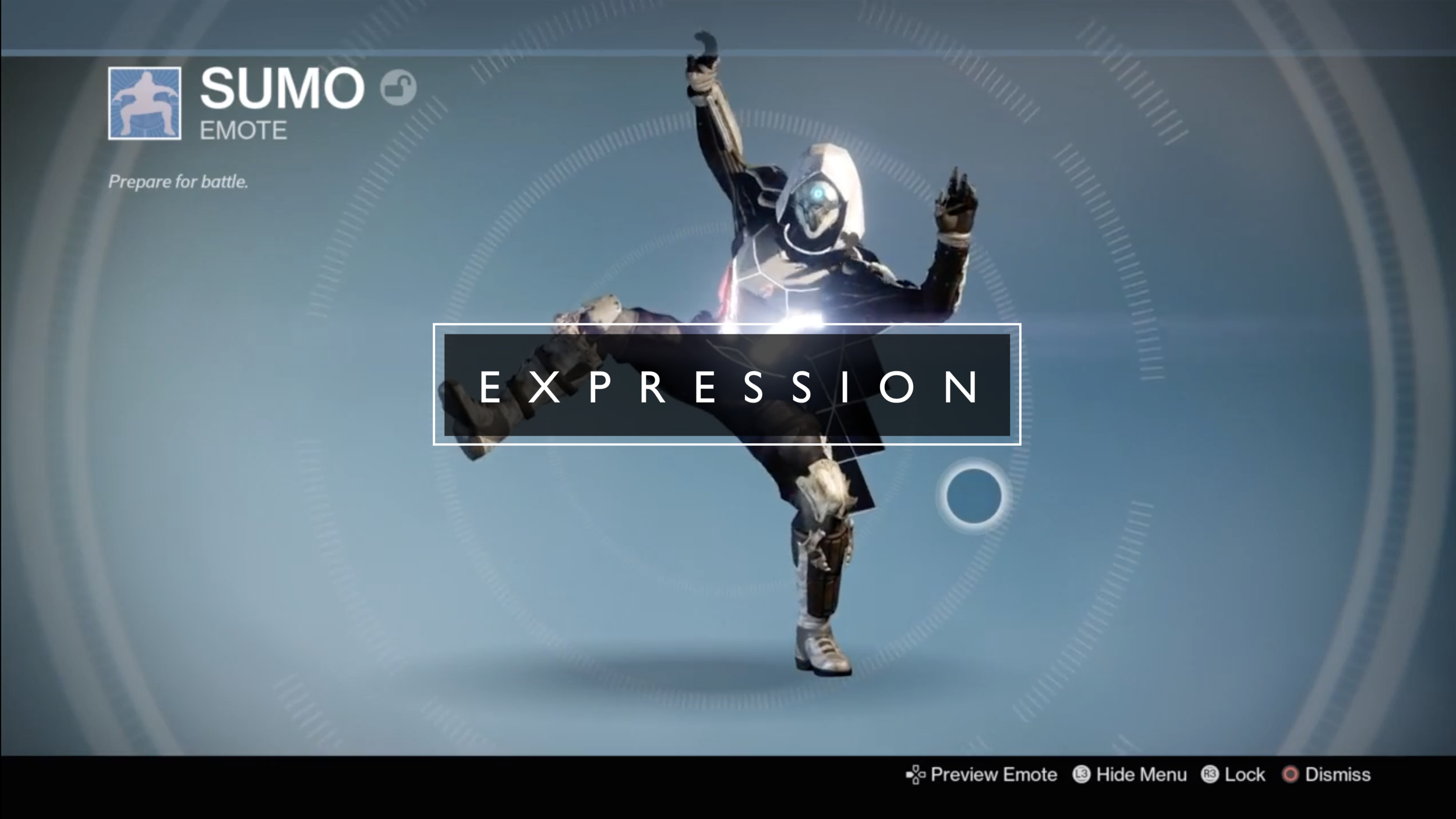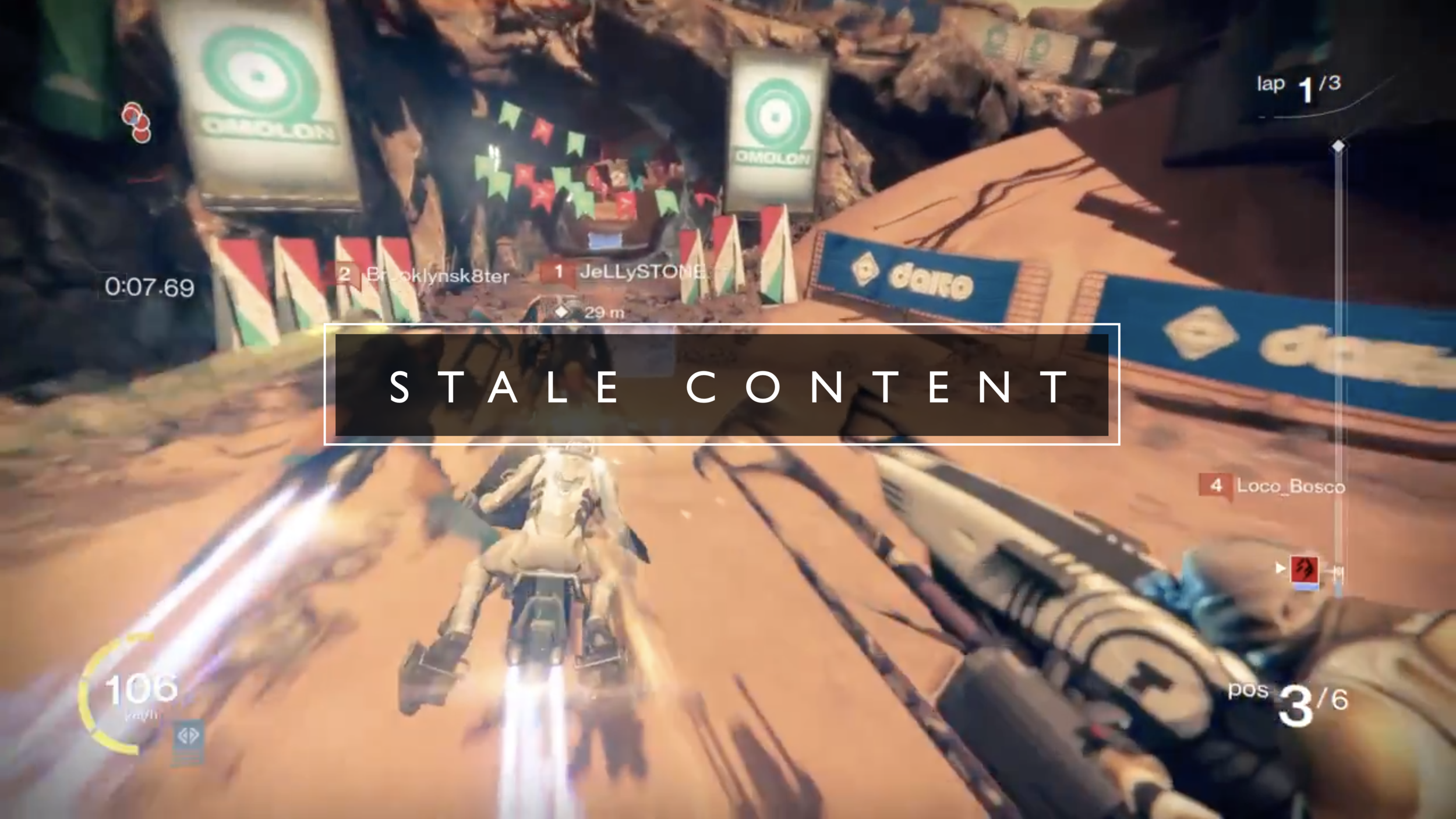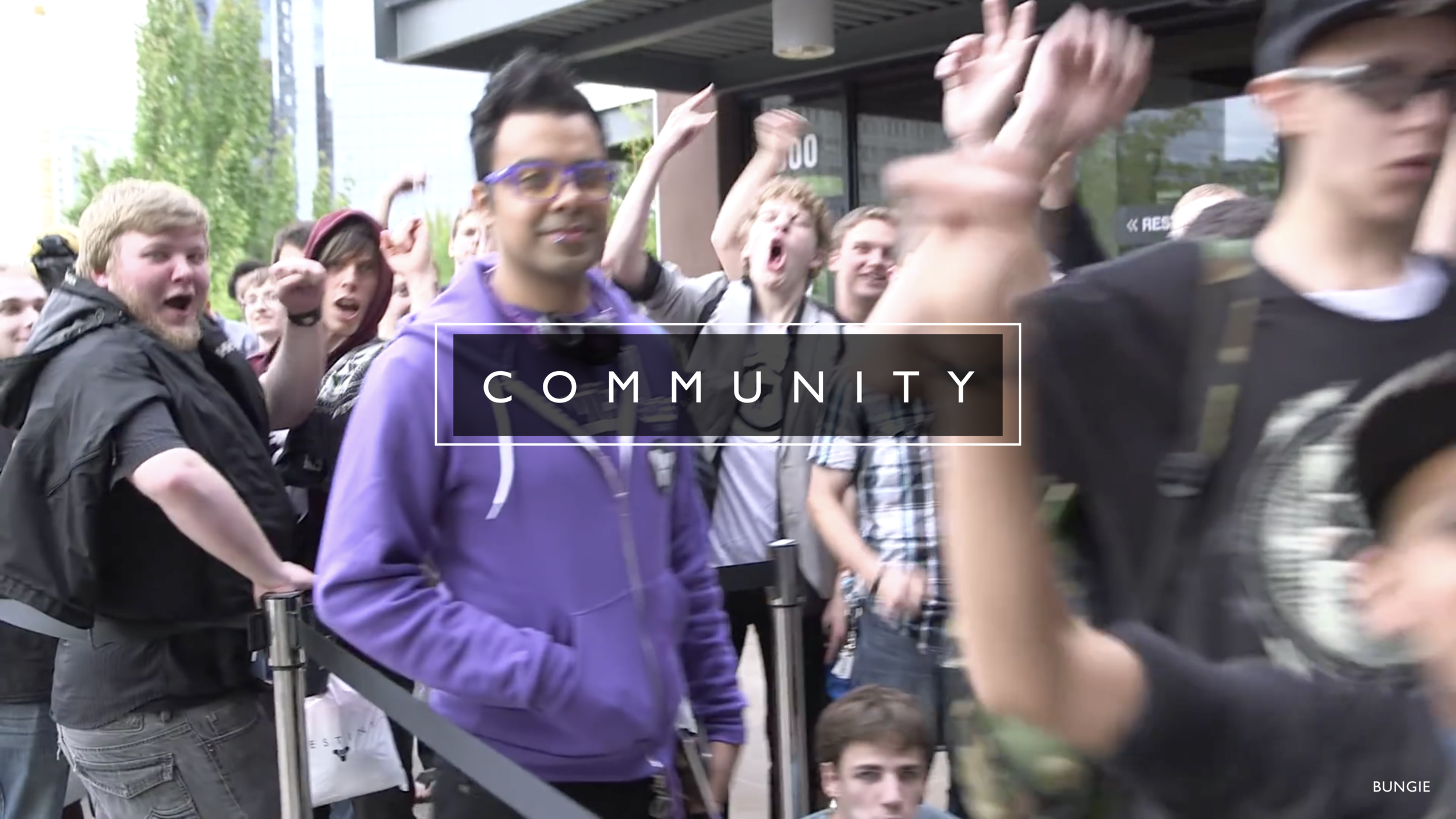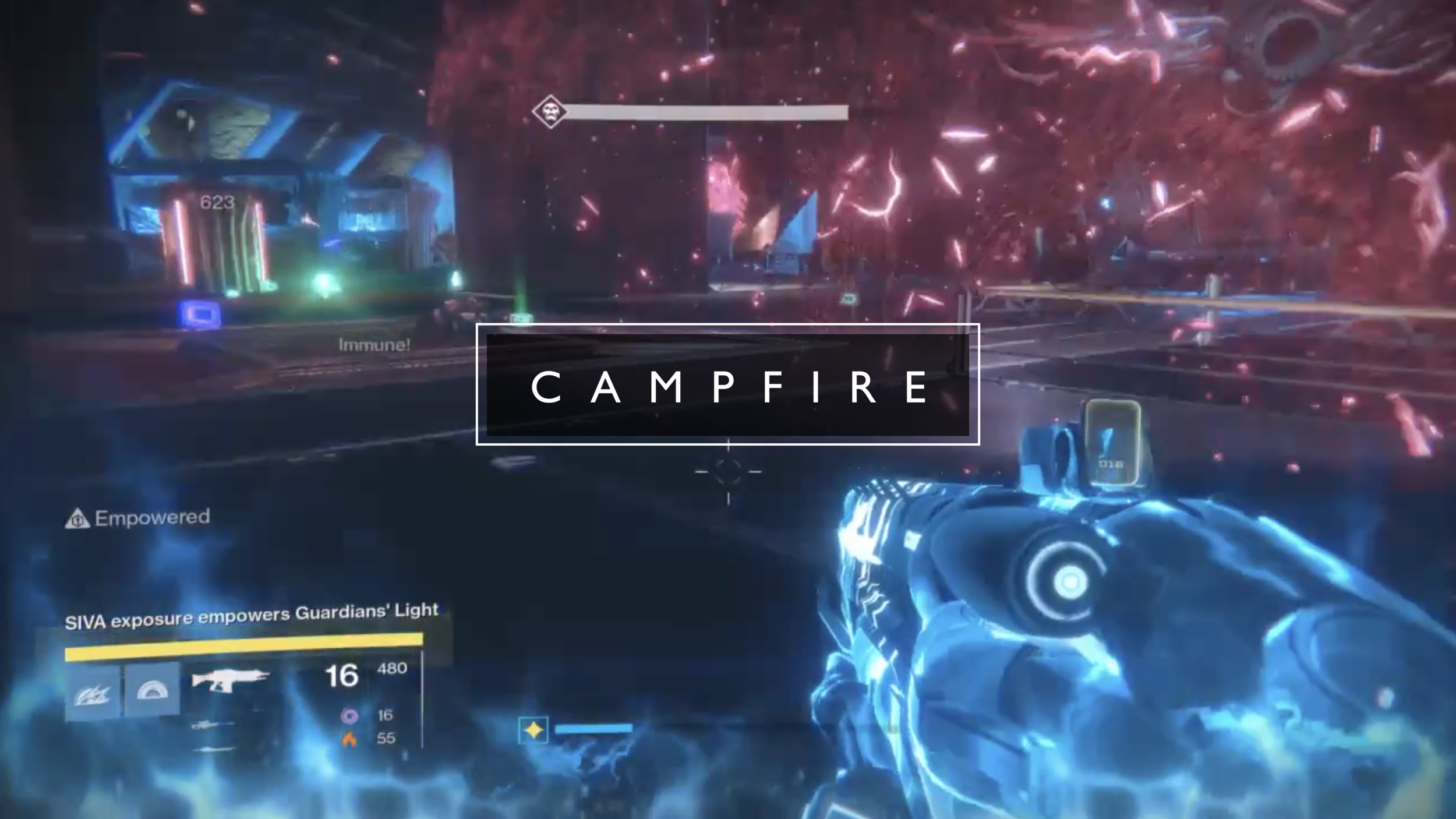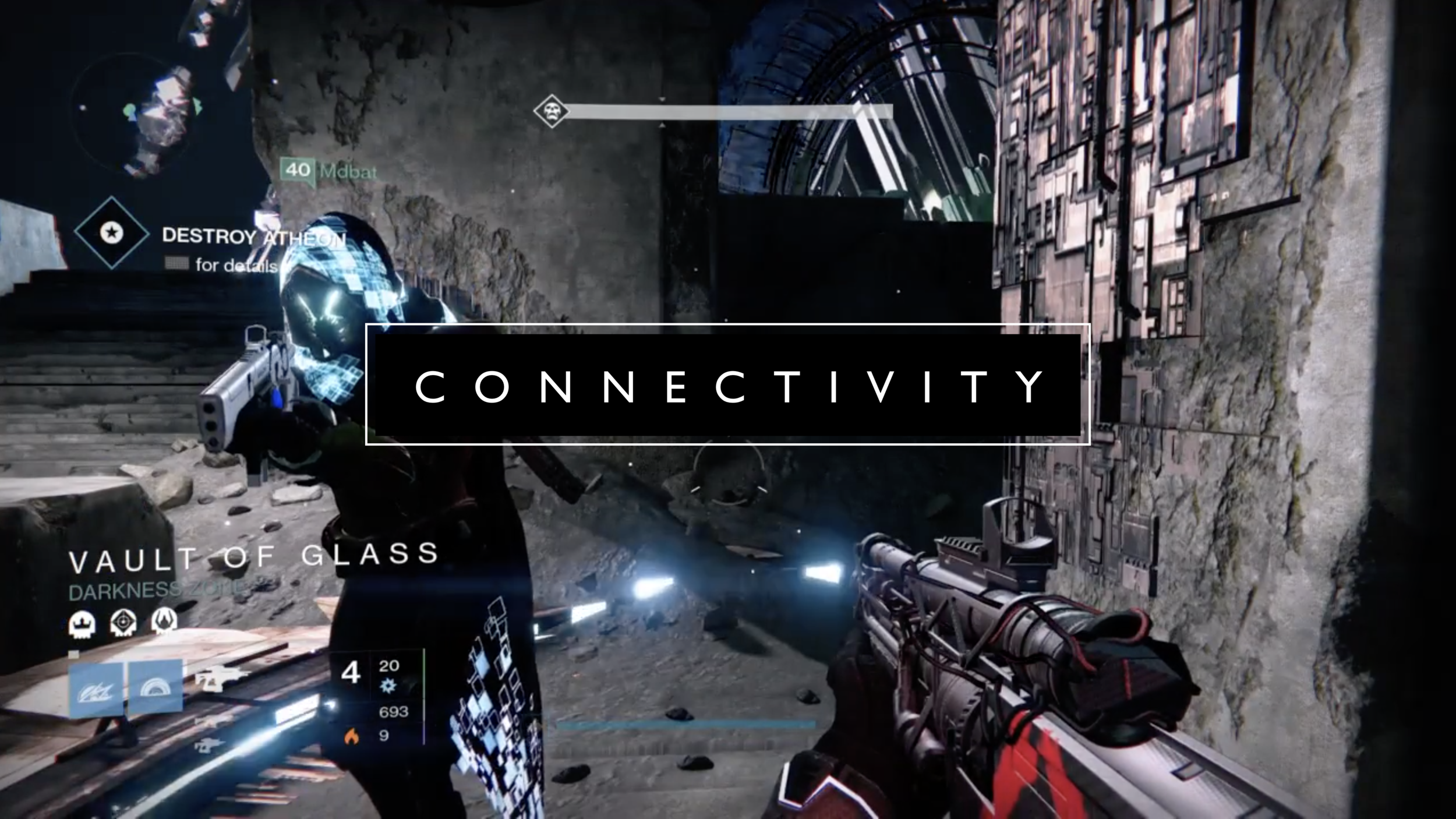Itchy Triggers: Destiny’s Habituation Tactics
Learning from Destiny’s habituation tactics
Best Conference Ever, Atlanta (2017)
Good morning everyone, I’m thrilled to be back in beautiful Atlanta this morning, in every sense of the word. It’s a very special place for me, and it’s so great to see so many friends here today.
As you can imagine, stories about people and their connection to place are at the heart of what we do at The New York Times, no more so than within the real estate section. And especially if we can make those stories as helpful, actionable, and as fun as possible. So today, I’m going to share with you some personal stories from my life over the past 5 years, which I hope will serve as food for thought for your business, your brain, and your year ahead. I believe that storytelling is at the heart of communities, families and cultures, but importantly it’s also at the heart of memories. And as a passionate advocate of real estate brands, products, and building things to make the process more enjoyable, I believe it’s in the DNA of what it feels like to own a home. So let’s get going here.
A few years ago, I got sick. Really sick. After a gradual decline in my health over the course of several months, where I was just convinced that being on the relentless hamster wheel of social media was just getting to me, as part of my job in marketing for a Manhattan brokerage. That it was nothing a quiet weekend wouldn’t resolve. I begrudgingly decided to go to the doctor, where he asked me what the matter was, to which I just replied “I feel awful”. He took some blood, prodded and poked in all the right places, and perhaps in some of the wrong ones too (who even knows, right?), and told me to wait while they analyzed a sample. Thinking back, that was probably the longest 15 minutes of my life, as I knew something was up the moment he asked me to stay put. When he returned, he told me to gather my things, go to the emergency room, and if possible, to get my wife to drive, because I was at risk of passing out, due to a chronic lack of oxygen in my blood.
So off we went, partly freaking out, and partly having a strange sense of calm relief that whatever was bothering me was about to be figured out. Little did I know what was in store, and how it would change my life.
Upon arrival, the tests continued, and a transfusion began to help restore the oxygen and iron count in my blood. I immediately felt better, and figured I’d be home in time for America’s Got Talent as usual. As you’d expect, the revolving door of ‘specialists’ came and went, until someone who was obviously a decision maker came in, and told me that I’d have to be admitted for some ‘internal’ investigation. My diet was reduced to broth and jello, although the relentless television menu of Dominos, Burger King and Olive Garden’s endless apps did nothing to lift my spirits, or satisfy my appetite. Over the course of the next 5 days, confined to the hospital and having blood taken every 4 hours, there were a number of surgical procedures to figure out what was really going on with me. The transfusions were helping, but not holding.
Then came the news. I don’t remember too much about it, as everything went foggy, and turned into that Charlie Brown phone voice. I had Stage 2 stomach cancer. Just like my Grandfather before me.
The doctor reassured us that everything would most likely be OK. I was a young guy, who‘d come in thinking he was just a bit run down, and they’d caught it early. And you know what? He was right.
I underwent a 10 hour overnight surgery to remove a tumor from my stomach, and when I came around I was in astonishing pain. I remember pressing the button on my bed to call the nurse, over and over again, and wondering why no-one was coming. After calling out a few times, the doctor came around and asked if everything was OK. I said I felt just fine, but I’d been pressing the button, to which he said ‘that’s for the Percocet’. No wonder I was feeling better.
So, I painfully recovered for a few days, learned to walk again, and doubled down on my now perma-craving for Dominos pizza on the TV before heading home.
But my life would never be the same. They still needed to run tests against what they’d removed, and I was in bad shape physically. It was going to take months of recovery and continual treatment, and some chemo, something that’s still not over for me as we remain vigilant each January. But the news came through that I was all clear, a feeling of euphoria unsurpassed in all my years of clubbing, gaming, or shouting from the soccer terraces. To know that I had pulled through, and that I was no longer a cancer patient, but a cancer survivor, was life-changing in the extreme. I’d lost a ton of weight, almost 60 pounds, had a new diet and exercise regime, and most of all, a completely different outlook on life. No longer did I sweat the small stuff, and my perspective changed entirely, in what felt like almost overnight.
It’s often said that life moments such as illness, marriage, having children, changing jobs, or leaving college can prompt significant, long-lasting habit change, and that’s definitely true in my case. These kinds of life moments are very often the kinds of triggers that also prompt customers to reach out to you for help of course, and understanding and empathizing with those kinds of formative habits can be helpful when thinking about how best to communicate why they should work with you for the rest of their lives.
As I recovered, I read, a lot. And I watched all those TV shows and movies I’d never had time to get through. A lot. I walked. A lot. The doctors were strongly advising keeping my mind occupied and not dwelling on my health in silence. And so in addition to consuming all those things I’d never had time for, I started to do something I hadn’t done in a long, long time. I picked up the controller, and started to play video games. Something I’d not done in over ten years. I’d always been a gamer, ever since my grandparents back in England used to sit me in front of the Space Invaders machine at the pub, with a stack of 10p coins and a warm Coca-Cola, while they hung out with their gin and tonics for the night.
But I knew I always I loved the arcades. In many ways my renewed relationship with video games, and one video game in particular, not only kept my spirits up during my long convalescence, but has motivated me to change my routine to spend more time with my family, ensure a stronger separation between work and home, helped me get off the social media hamster wheel, and realize that there’s a big wide world out there aside from chasing a career. Having those 6 hours back in my day in particular was also a real life changer. It’s the nature of this life changing moment and the resulting habits that formed, and why, that I want to share today.
As I got back into my platform of choice, the Playstation, I found that games were very, very different from how I’d remember them from 10 years ago. They were immersive and realistic. They were online and social. And they required a mental and physical skill in navigating expansive, entire worlds that I’d never really experienced before. Sure, I’d spent a long time with Tekken, Metal Gear Solid and FIFA in my bachelor days back in London, but nothing like this. And I’d always played on my own, or at least with someone attached to another controller in the same room. The idea of playing along with someone on another continent felt, and still feels, like science fiction to me.
And speaking of things like that, I’m still amazed at how wi-fi works, or how Alexa knows exactly the answer I’m looking for. But it was a game called Destiny that captured my attention, and my imagination. It would soon capture much more than that. I’m going to share what I experienced in terms of the game’s habituation mechanics, what we might learn from them, and how the game not only pulled me in, but has kept me playing every day for over 3 years. So far. It’s one of the most effective repeat business models I’ve ever been proud to be a part of.
Now, I’m sure that we have at least a few secret gamers in the room, but I’m also sure some of you aren’t, and maybe your perception of gamers isn’t the kindest. You’re probably picturing a geek sat alone in a dark room, headset on, surrounded by junk food. But the loner loser stereotype is long gone, and I found a whole world of connection where once there wasn’t one.
So what exactly is Destiny? Simply put, it’s a first-person-adventure-shooter, where you play a futuristic warrior brought back to life to battle the forces of darkness across the solar system, in pursuit of re-establishing humanity’s light in the universe. No big deal, right? So sure, it’s shooting things in the face, but it’s also puzzle solving, playing collaboratively, exploring worlds, scavenger hunting, socializing, racing, earning rewards, making your character stronger, and lots more besides. Designed by Bungie as a ten-year adventure, and with an initial production cost of over $500 million, a star-studded voiceover cast, and even a soundtrack by Paul McCartney, it has an incredibly rich global community engaged in it — something that’s about to get a lot bigger when it comes out for the PC later this year. And for some context on the engagement numbers, there’s over 30 million active monthly players, the average of which has logged well over 100 in-world hours. For many people, this game, is no game.
But what is it that keeps millions of people coming back every day, to quote our friend Sean Carpenter, building relationships, solving problems, and having fun? And why does an understanding of the mechanics of habituation help you think differently in building your real estate business? I’ll frame this with a little background on how we think about this for what we do in my team at The New York Times, and share a couple of examples from things you might already know.
At The New York Times, we’re a subscriber-driven business. That’s where the majority of our revenue comes from, where our most engaged audience is. It’s also what’s most appealing to advertisers wanting to work with us of course. Deepening that engagement, and building larger and larger audiences of registered users, and ultimately subscribers, is almost exclusively what the product teams like mine do there. So understanding the triggers and motivations behind what drives someone to spend money with us becomes key. And what drives that for us are 3 things. The number of different things a user looks at, the amount of times they come back, and the range of topics across which they read. If they hit all of these at the cadence we’ve defined, within a month, we consider them to be ‘engaged’. And the more engaged readers we can create each month, the greater the propensity for more of them to subscribe. And more subscribers, means more subscriber revenue. More subscriber revenue means more support for the mission of our journalism.
Think about this in relation to your business presence, on and offline. What are the motivating triggers that cause people to work with you? Especially those that work with you more than once, or refer business to you? What kinds of consistent and repeatable behaviors do these folks exhibit? Are they interacting with you on a regular basis across multiple platforms each month? Could you quantify that and grow it? What I’m describing here is a means of going beyond the database and really getting at the people problem behind these kinds of motivations, and then backing out those user needs into something you can quantify and build against. That’s a very common psychology-insights product growth strategy we’ll see a lot more of when we return to Destiny.
So I believe that the specific levers that get users habituated to your product are the thing to focus your time and efforts on, and I’ll give you a couple of examples of what I mean by this. In terms of fostering long-term use of a product, successful digital organizations spend a lot of time on what that initial experience is for a new user, and deliberately encourage short-term, reward-based behavior they know will drive long-term use. For example, at Facebook, if a user gets to 10 friends within the first week, the likelihood that they will begin to feel value from the news feed and turn into a regular user in the long-term dramatically improves. Similarly with Netflix, if a user can get 5 things into their queue in the first 14 days, the propensity to be a significantly longer-term subscriber also goes up. There’s a lot of product pressure on these initial moments in building a relationship with a new user.
Think of other services like these where the initial experience is based on building up items in a list you can use, adding friends, or otherwise developing a sense of personal taste. Now think about most brokerage or online real estate search experiences. More often than not they’re not built around empathy or motivations, they’re built around a database, and the filtered presentation of that database to the user, based on some primitive user experience tactics such as drop downs or checkboxes. Most do not fundamentally get at the questions the user has in their head. What does this mean for me? What does it feel like to live there? Will my family be happy in that home? Can I afford it? These are very different kinds of questions from the ones ‘answered’ by real estate professionals online such as ‘how’s the market?’ or ‘what’s happening with inventory and absorption rates this month?’ Solve for the people problem first, and the business answer will follow.
So getting a user to come back to your product over and over again early on, becomes incredibly important to the overall health of your business. Real Estate professionals know this all too well as this is how referrals work. But it’s much more than that. This isn’t just fostering repeat business we’re talking about, it’s about developing a deep, meaningful, helpful, and fun relationship with the user, in the long term. And especially thinking more about the the non-user who you want to become your customer. Those folks indirectly connected to who you currently work with, who have the highest propensity to become your new customers. It’s thinking about tactics such multiple touch points, rewards, sharing, education, and ultimately achieving something wonderful together. I want to use the lens of Destiny to illustrate how building habituation could work for you in the light of what I’m talking about here.
The mechanics of Destiny are pretty simple to begin with. You start by creating your character. So right off the bat the first thing you’re doing is setting a level of personalization and humanization for who you’re going to be in that world. The first question the game answers is who am I? and lets players determine this to a very high level of visual sophistication. Players then divide up into classes named after the style of play they’re most likely to resonate with. Either Hunter (quick, agile and cunning), Titan (heavy duty, muscle and supporting) or Warlock (magical, mystical and mysterious). These styles not only reflect gameplay style, but also personality traits, each class being very protective of itself, especially offline. Destiny Warlocks in particular are very proud to call themselves Warlocks. Many more serious players eventually have all 3 on the go at once, but to begin with, you pick one, and are then brought to life for the first time, by your robot sidekick, the ghost. Ghosts are responsible for guiding you through the game, and essentially act as co-pilots for the experience. They help explain where to go, what to do, and when needed, bring you back to life if you eat it.
Now, outside of bringing customers back to life, the ghost is probably the closest co-pilot metaphor in the game for what a realtor does. They guide, they provide insight, they show the way like a canary in a coal mine, and they explain how the world works. This level of guidance and insight can very often separate the memorable realtor from the one simply working to get the customer through the closing table. I feel like I see this a lot in my Facebook news feed. Hey, I think we’ve all seen this in our Facebook feeds. There are those who are actively engaged in their communities, making a difference, helping others, and having fun. And then there are those who, begging for likes, have a desperation about their presence, where you can easily smell their commission breath with every open house post that’s immediately hidden.
Anyway, back to Destiny. The game starts off with some pretty simple navigating around a level, learning how to pick things up, jump, open doors, encounter enemies, that sort of thing. It’s rudimentary game mechanics explaining the controls, but this first level is a critical moment for the game. It’s where players are learning their own style of play, experiencing the world for the first time, and making those important decisions as to if this game is going to be for them. As I mentioned before, there’s a tremendous amount of product pressure on this one moment, and the way Bungie have dealt with it is a very common product strategy, to ensure that the rewards and accomplishments the user feels are immediate, frequent, and have a high rate of return for the time invested. Reward is deliberately designed to be high early on, so that the player understands the mechanics of the game, and can settle into the world at their own pace. Think about this in our world though. How rewarding is the first day of working with you as a realtor? Does the customer feel a sense of accomplishment by the end of it? Or are they deep in the valley of despair?
Later, more significant habituation tactics become available, and the game appears to grow around the user, unlocking different missions of increasing complexity, the first real reward of which is to unlock something called the patrol level, which is an enormous, free-roaming environment entirely self-directed by the player, where they can team-up with other users who also happen to be nearby, run small missions and bounties, earn rewards, and grind towards earning better and better gear. It’s specifically designed to be a playground for working at getting better, together.
But as players spend more and more time in the game, the rewards start to become further apart, and increasingly variable, and this is where the real habituation tactics begin. There are a number of regular tasks in the game where the rewards you’ll get for completing certain activities are entirely random. One such activity is picking up something called an engram. An engram is a gem-like object which drops from killing a particularly tough opponent, or completing a tricky task. Engrams are then brought to the shared social space, called The Tower, which is a non-combative space to help guardians change gear, collect missions, form allegiances, and generally manage their presence in the game. Think of it as the admin area of the game perhaps. It’s full of non-playing characters who guide you through the story, and essentially acts as the hub of the game. It’s usually the first place you go when you fire up the game every day, as there’s always something to do there. It’s also where a character called The Cryptarch resides, at a little booth off to one side of the level, and he’s the guy that can decrypt your engrams into loot. Loot is the in-game term for weapons and armor.
This guy is one of the most hated characters in Destiny, as what he decrypts these things into is entirely random, and often just feels like pure chance. Talk about variable rewards, this feels about as variable as it gets. There’s 4 levels of engram, organized by color, with yellows being the rarest. Known as exotic engrams, yellow engrams drop ultra-collectible items that give your player the ability to do something incredible. Sometimes it’s a gun that never runs out of ammo, sometimes is a pair of legs that allows you to jump further and higher than anyone else. But it’s always something that changes the nature of how you experience Destiny, and that’s the key tactic here. The more varied the reward drops, the more finesse you can put around how you play the game. So this is Destiny’s version of the on-boarding I described with Facebook and Netflix, getting the user to The Tower and to be in Patrol are the critical items for longer-term use.
Think about this in relation to what you do online. Not only are we thinking about what those underlying motivations behind referral business are, but what is the step that you need to get your users to? Is it signing up for your newsletter? Looking you up on LinkedIn? Or maybe saving a property or search for later? If you can unlock those motivations and then get users to reach a meaningful point in your product mix for them (and I don’t mean calling you), then I think you’re well on your way to getting them to come back again and again on a regular basis.
Now, obviously this kind of discussion raises the specter of addiction, something I want to acknowledge but not dwell on here. Aggressively fostering habituation tactics is as risky a proposition as it sounds, and walking that fine line between value and harm is always something to be sensitive to. So as game development budgets drive higher and higher each year, the specific mechanics and products that drive sustained user engagement as a key business tactic, have given rise to the role of what’s known as the investment designer.
As with many digital-first positions, this role didn’t exist ten years ago, but as the games market has gotten increasingly saturated with newer and more complex games environments, it has become harder for individual games to hold a player’s interest over time, with the high risk of lack of new content updates, and an increasingly stale user base often ending up as kryptonite for a game destined for the bargain bin at GameStop within 6 months. The Investment Designer’s sole purpose, just like a Product Owner’s, is to use statistics and play testing to determine the ideal rewards and achievement system to keep you playing the game for as long as possible, just like the psychology behind a slot machine for example. I want to spend a couple of minutes outlining some of the behavioral techniques they employ in games such as Destiny, and apply them to some practical examples of how they might apply to us in real estate.
The first is something called a Variable Ratio Schedule, and that’s when a reward is delivered on average every certain number of times an action is performed. Essentially it’s a way to train the user into doing something on a more regular basis, and ultimately forming a habit. The way it works is there’s a fixed probability of you getting the reward according to the game’s algorithms of course, but the number of times the action must be completed to get the reward is variable — something users end up trying over and over again to achieve. It might take 20 tries, and then you’ll get the next one after 2 tries, but over time, it might average out to one reward for every ten tries. The best known example of this in Destiny is an infamously elusive exotic rocket launcher known as The Gjallahorn, to which there are hundreds of hysterical ‘freak-out’ videos on YouTube of players having this drop for them. For a while during the early days of Destiny, this separated the community into the haves and have nots. This can be one of the most frustrating, but ultimately rewarding aspects of the game, and it’s a very powerful tactic for keeping players engaged at scale, and in the long term. This is the same set of mechanics used by slot machines, and our example of the engram mechanics are also right in the bullseye of how this works, as are drops from the end of group activities such as strikes, the crucible or raids (more on all of these later).
For real estate users, the experience of online search can very often feel like it’s working with a variable reward schedule, where the user performs searches over and over again, looking for that perfect home, and we see this reflected in the ratio of searches to actual listings engagement. Sometimes it’s never there, sometimes there’s 3, all at once. But it’s the promise that within the noise, the next life-changing gem of a home is out there somewhere, and simply sticking with the search process will warrant its own rewards. This kind of behavior is very common with larger search sites, which lapse users into long-term recreational browsing, often long after the transaction has closed. It’s important to note here though, that while recreational browsing is great for audience and advertising growth initiatives, it does little to help the seller looking to sell.
I’m going to share some notes here I found in a fascinating discussion on Reddit about Destiny’s habituation tactics. First, something called a Fixed Interval Reinforcement Schedule. This is when a form of positive reinforcement is delivered after a set amount of time, encouraging and rewarding return frequency and longevity for players. This kind of reinforcement is independent of whether or not the player performs an action — it just happens every so often. This is a lot less addictive than its Variable Rewards Reinforcement cousin, but Destiny uses it to get players to log on every day. For example, every day, new activities refresh, and with them, new opportunities to get rewarded. The connection between the activity and its reward is so simple but so strong, that the activity becomes a reward in the player’s mind. Examples of this are seen in daily and weekly missions, the weekly reset around endgame content such as raids and nightfalls, and the mysterious appearance of a character named Xur, who appears at a random location somewhere in one of the social spaces each week, and hands out yellow engrams and exotic items. There’s even a very rich ecosystem of services and apps dedicated to letting players know what’s refreshing every day, and there are even apps dedicated to Xur’s location each week to help solve this for players.
I tend to think of this as most powerful when the Realtor does something consistent in terms of timing, but is always unexpected for the user. Many use the tactic of the surprise gift card in the mail to help with this, but it’s also just a very light touch but delightful personalized video message in something like Facebook messenger or Bomb Bomb. It’s the approach of reinforcing positive sentiment around you and what you do that’s the actionable part of this. I’ve often heard a technique called 10:1:2:3 described for thinking about this. Start with your business problem. It might be that you want to grow your network for example. So for 10 minutes (and no more than 10 minutes — the time it takes to drink a cup of coffee) every day, you do one personalized video message to an existing customer, comment on 2 people’s posts in Facebook, and connect with 3 new strategically relevant people on LinkedIn. Establish a routine of this for a month, and if it’s working, you’ll have added almost a hundred people to your network, while generating a vast amount of positive sentiment around the perception of who you are and what you do. This all sounds like such a simple set of techniques, but I’m always amazed at how hard this is for Realtors to stick with, even for a week.
So, what we have here in Destiny, but also in Facebook in particular, is one system that gets you to log on regularly, and another system that gets you to stay on chasing variable rewards. Who here also checks Facebook before they get out of bed in the morning? You keep playing. You level up your Hunter, your Titan, your Warlock. You see a new game come out, you take a break. But you’ll come back because of something we all know too well these days…
The Fear of Missing Out, or FOMO, which has been around for a while. But thanks to social media, it’s more rampant than ever, and certainly something our readers feel acutely at The New York Times in accurately staying on top of the news. Even if many players haven’t actually spent time in the game recently, they still come back to the Subreddit, the thousands of YouTube channels dedicated to Destiny, or their clan’s group chat apps every day because they enjoy the community and the game still holds a fascination for them. Destiny has limited, timed events that play on this, including holiday events such as Sparrow Racing, or The Festival of the Lost, both of which offered limited release gear and ornaments for your characters, as well as a monthly competitive crucible event called Iron Banner, and other items sprinkled throughout the experience over the arc of the year to ensure you’ll be pulled back in. The crucible is where players fight against each other, instead of the game. It’s often referred to as PvP (player versus player) as opposed to PvE (player versus enemy). The Iron Banner is particularly interesting for clans (groups of connected and like-minded players, and most likely friends who know each other offline), who often compete for the highest worldwide score over the duration of the week while it lasts — either against other clans or to see who can be the best within the clan. Those who top the table have the bragging rights over other clans and members for the remaining 3 weeks… until next time.
And finally on the tactical examples employed by investment designers is a notion of Sunk Cost Fallacy, or the irrational belief that you should allocate more resources to something that won’t be rewarding because you’ve already allocated resources to it. The idea that you’re simply too deep into a task for it to be worth backing out. Who’s ever felt like this when watching a TV series, or reading a book? As outlined in a thread on Reddit, the classic example goes like this: You buy a non-refundable ticket to a movie the day before it comes out. Later, you read a review of the movie, and you realize that you’re not going to like it. However, since you’ve paid for the movie, you decide to go anyway, because otherwise you’ll feel like you’ve wasted your money. This is a fallacy because the ticket is a sunk cost. You’re not getting that money back by suffering through a movie you don’t like, so the best move of course is to actually save your time by not going to the movie. The Destiny equivalent is deciding that you’re not having fun with the grind for a particular material or armor set, or with the Crucible, or that the activities have become stale, but you still keep playing because you’ve already put so much time into the game.
This one is particularly interesting for Realtors I think, as it speaks to customers working with you, who are so invested in working with you, that even if you’re not providing them the value they seek, they’ll still continue to work with you, even though perhaps they shouldn’t. There’s that sense that online services can also make you feel ‘locked in’ to continuing to use them, even though the better experience that gets you to what you need might be elsewhere. And of course, existing home owners know this all too well. Having spent so many years paying off the mortgage, there’s a sense that simply continuing to pay it at their current rate is the right thing to do, and not to perhaps refinance or even begin to think about a move. This is a delicate art for the Realtor, who has to play therapist and business coach at the same time for the seller, but sunk fallacy cost is something to keep in mind when having those discussions. And it also works the other way with the practice of following-up. As we all know, most sales are made very deep into the follow-up process, where the idea of persistence, patience and helpfulness become critical, but the notion that you’re already so deeply invested into following-up with a customer that you won’t switch your efforts elsewhere can also be incredibly damaging to your business, and simply a waste of time.
But of course there’s much more that they do to keep you in-game, the most significant of which is reset day, which happens every Tuesday at 5am eastern. This is when all the new missions reset for the week, and the rewards you’ve been grinding through become available again. It also allows Destiny to cycle through fresh (or at least adjusted) content, add new challenges, and generally keep things interesting. Most long-term players focus on Tuesdays as their means of getting things done for the week, and it’s unquestionably the busiest Destiny day of the week. There’s a mixture of story-based missions, and harder collaborative missions called Nightfalls and Heroic Strikes. This routine becomes established in the user’s mind, and becomes habit. Reset Day on Tuesdays, new guns on Wednesdays, special packages with Xur on Fridays and so on.
I’m a big fan of this approach for fostering behavior around online real estate experiences, and it was something we did a lot of when I was building digital experiences at The Corcoran Group in New York. Establishing consistent times and days when things would be published, not only makes your life logistically simpler, but it also trains users to expect when those things will be published. At Corcoran, we pushed Facebook updates at 9am, 4pm, and 2am, every day, for years, always predicated on having fun, tapping into what was going on in the city that day, and most importantly, not selling. Our guiding principle was simply to be as helpful as possible, in the moment. 9am to capture those folks arriving at work and checking Facebook when they got to their desks, 4pm as folks wind down for the day and begin to think about going home, and 2am to capture strategically interesting folks in different time zones. We even named a product after this, a home of the day on Tumblr we called ‘The 10am Special’, which ended up being a greater traffic driver back to the site than Facebook and Twitter combined.
And then there’s the competitive player versus player aspect of the game, probably one of the strongest forms of habituation in the whole game. While it’s possible to burn out on all the story missions, and essentially have completed everything, the player versus player mode never gets old. It’s a different game every time, always with new players, and is significantly more competitive. Appropriately named The Crucible, it’s Destiny’s means of keeping players competitive, honing their skills against other, usually better, players, and generally having as much fun as they can. There are hundreds of thousands of YouTube videos dedicated to Destiny’s Crucible, from fails to heroic last-stand performances.
It’s divided up into dozens of different game modes, from capture-the-flag style encounters, to straight up ‘kill everything’ modes. The pinnacle of these is the weekly ‘Trials Of Osiris’ which is a highly competitive 3 vs. 3 mode, and is intense, stressful, and has the greatest level of rewards for anything related to PvP. The end goal of this is for you and your team to go 9 unbeaten rounds, the reward for which is a trip to the lighthouse on Mercury, a secretive level full of ultra-rare loot. Such is the demand to get there, that there’s even a small cottage industry of gamers who will ‘carry’ players to the lighthouse in exchange for money. It’s frowned upon by the community as it’s perceived as cheating, but for those desperate to go, it’s an option.
And speaking of cheating, with a game of this intensity, there’s obviously going to be a lot of pressure to find those little tricks to out maneuver the game’s designers. Referred to as ‘cheese spots’ in the story modes, and usually consisting of areas where it’s impossible to get killed, one of the most contentious practices in PvP is lag switching — the process of deliberately meddling with your internet connection so that your character appears to glitch in and out of the game, making you almost impossible to kill. The apex of this is the infamous DDOSing, where a malicious player will actually overload your connection in an attempt to kick you from the game. This is particularly rife in Trials Of Osiris, the nearer you get to the 9th game.
The real estate industry, and real estate conferences in particular, talk a big game about community. It’s one of those intensely loaded terms that means different things to just about everybody, and is notoriously impossible to build. I tend to think that most communities around topics already exist, but it’s great products and services that can help in tapping into them, and connecting them together. Embedding with a community is one of the strongest tactics a realtor focusing on a local market can do. A great example of this is a favorite of mine, David Smith, who works the suburban Vancouver market with Royal LePage in Canada. David’s mantra is ‘People over property. Always.’ and it’s something that’s in the DNA of everything he does. He’s particularly well known for a regular video series he produces each month called ‘The Local’ where he spotlights a local service such as a food bank, refugee center, school or library. A former pastor, David’s whole approach is that he serves the communities he happens to sell in, and as a result, even though he’s fairly new to the business, he’s growing in incredible ways. If there was ever a polar opposite to the commission breath I spoke about earlier, David would be it.
And it’s this notion of tapping into community and celebrating the self-expression which comes with it that Destiny has also very successfully built, and monetized at incredible scale. What you look like, what you own, where you spend time, and how you can express emotion in the game is a critical part of Bungie’s ability to keep players involved in the world. So much so that they’ve built their eCommerce platform within Destiny entirely around the idea. Expression comes in many forms inside of Destiny, specifically shaders and masks, which allow you to change the color of your outfit, emotes, which allow you to move in certain ways, from clapping to dancing, and pointing to weeping, and most recently ornaments, which trick out your gear with light effects, signaling that you’ve completed some of the hardest things in the game. All of these items drop as rewards from in-game activities, but it’s also possible to buy them from a trading store in The Tower. These micro-transactions are a key part of the Destiny ecosystem, and fund what they refer to as ‘live events’ — those timed events released seasonally I described earlier, which allow players to have fun for a limited time. One of the most fun of these is Sparrow Racing, where you get to race against other players, Mario-Kart style. These live events are further examples of how to keep the content fresh and interesting for returning players, and foster the sense that there’s always something for them to do here.
And speaking of content updates, the notion of content getting stale inside of Destiny is one of the biggest criticisms leveled at it by the most hardcore of players, desperate for new things to do all the time. Since launch, there have been 4 major downloadable updates to the game, usually happening every 6 months or so, and progressing the overall story arc in some way, or otherwise themed around a specific villain. They’re some of the most anticipated events in the gaming community, with millions of players jumping on the hype train months in advance, usually to the tune of crashing Bungie’s servers upon launch day. Most notably, they feature end game content called Raids, which are where the most skilled, hardcore players spend most of their time. Raids are long form, collaborative games which usually last a few hours, and comprise of a team of 6 players working together to solve puzzles and defeat the hardest of challenges together. Destiny Raiders, like their PvP counterparts in Trials of Osiris, and some of the most dedicated, most habituated, and often some of the most contentious players in the community. These guys are the real deal when it comes to knowing how to play the game.
In order to run a raid, you have to team up with 5 other players, something that can be tough to do if you’re just a casual player. So there’s forums online where you can post to join a team, and a vetting process whereby other players check you out to see how good you really are. Very often the veteran players will not take less skilled players through the encounter as they just don’t want to waste their time having members of the team die on them in the middle of some complex maneuver. This is where community comes into play, as finding those regular people to run with each week is a pretty daunting task, especially if you’ve never raided before.
But the thing to remember here is that there are deliberate, timed and scheduled tactics for ensuring that content isn’t getting stale. Think about this in relation to your website, and mentally audit this. How often does the content change, really? That old blog post from 2012 about where to watch the fireworks on July 4th might still be rocking your world for SEO, but how are you keeping Google feed with fresh things for your users to read, and growing that for your business? Of course, we know this problem very well at The New York Times, and actually have the opposite problem of what to surface for readers based on the equivalent of a Harry Potter book being produced every day.
Finally, I want to return to this idea of community, as that’s why we’re all here today. Destiny has one of the strongest, largest, and most engaged communities in video games, with players forming friendships, lining up for hours in advance for the new releases, and spending days in-game chatting with each other. In general, and I say this humbly as one of the most dedicated to the cause, Destiny players are just nuts. And proud of it. To show you just what I mean by this, and I know we’re all friends here but if you’ll excuse the incoming strong language, here’s a great example of what I mean.
Where this all comes together is with the concept of clans — allegiances within the game where players can band together to chat about common interests, and ultimately run together on a much more consistent basis than simply seeking out unknown, unskilled random players to play with. Clans are the apex of how community works inside of Destiny, and something that’s increasingly important to how Bungie has been fostering habituation around the game. Players that are members of clans (think of them as special members-only clubs that guardians can belong to), chat everyday, usually off-platform in apps like Band or GroupMe. Organizing themselves around activities, specializing in types of games, and spending large amounts of their day chatting online about how to be better at it all. This room is a clan, and even if it’s just for one day in person that we get to hang out together, these connections that form today will resonate and last for much longer.
My experience of joining a clan completely transformed my Destiny experience. I’d mainly been a solo player, occasionally teaming up with random players and running raids or strikes. But upon joining a clan, I got to run with a consistent group of people, who became friends, and we learned to understand each other’s strengths and weaknesses in the game, and accommodated everything as we went. My raid completions went up, but also my engagement with the game. Suddenly I was running endgame content on a much more frequent basis, and overcame the fairly intimidating fear of being the guy in the raid who doesn’t know what to do.
Similarly, my connection to the real estate clan also dramatically augmented my understanding of the industry, and just made me better. Suddenly I had friends all over the world eager to help me, who were interested in what I was doing, and when I got sick, looked after me. In turn, I reciprocated that warmth, and there’s an incredible mutual support system in place in our industry. It’s what keeps us learning, getting better, and serving the needs of our customers every day. It also keeps us building relationships, solving problems, and having fun.
This sense of community is also something that strongly feeds the habituation the regular Destiny player experiences. It makes it richer, more interesting, and gives back something new every day. For example, my family know that Tuesday night is Dad’s Raiding night, and around 10pm the group begins to form, my phone begins to buzz with invites, and we get going on the weekly featured raid. It’s an incredible habit that doesn’t feel like addiction, but more of a campfire around which we share common experiences, get to know each other, and simply have fun.
So let’s bring all of this together. What do these tactics mean for your business? How important is it really to be thinking about this kind of thing when building what your users experience? Habituation is the lifeblood of any strong business, and especially in the real estate industry, so developing tactics to get users (and by that I mean customers), to come back over and over again is critical. Start thinking about what those life events around your customers might be. Tactics such as developing a regular rhythm around when your newsletter subscribers can expect something fresh from you, just like Destiny thinks about Tuesdays, can accelerate who you’re connected to. Rewarding your customers for their behavior early and often works. Tapping into community and connecting those discussions between your customers is powerful. Ensuring that your online presence remains active, fresh, and doesn’t go stale. Thinking about that sunk cost fallacy and being honest when a customer needs to move on.
Identifying what those levers of habituation are can also be something to think about — for us at The Times it’s getting users engaged based on breadth, depth and frequency. For Facebook it’s getting users to 10 friends. What might that look like for your business? Perhaps it’s getting users to connect with you on 5 different platforms each month. Maybe it’s identifying who your most engaged cohort is, and simply speaking to them about why they love your product. Or implementing that 10 1,2,3 strategy to grow your network. And if you don’t have those people who love your product, then that’s a healthy sign that you need to make some changes.
Try to get at why people come back time and again, why they share stories about you and what you do, and why they talk to their friends about how great it all is. Or why it isn’t, and apply this kind of user-centric design thinking to your business as a strategy for growth and optimization. If you can foster habituation tactics into what you do, that goes beyond thinking about superficial social, video, or content tactics. It’s a deeper level of connecting with the right set of users, on their terms, at the right time for them, and one that I believe is the only way to build a business into 2018.
I hope you enjoyed my stories, and I’ll see you for a beer or two later tonight.
Thank you.


